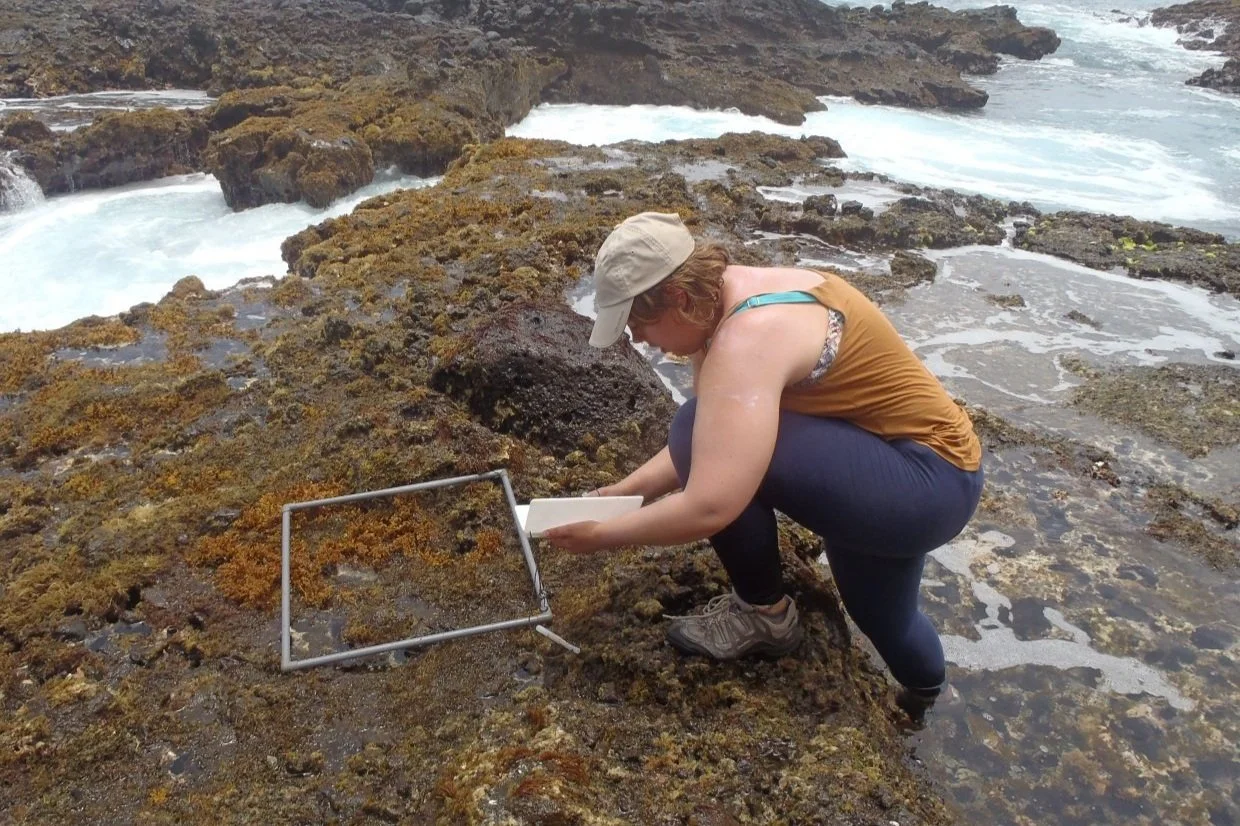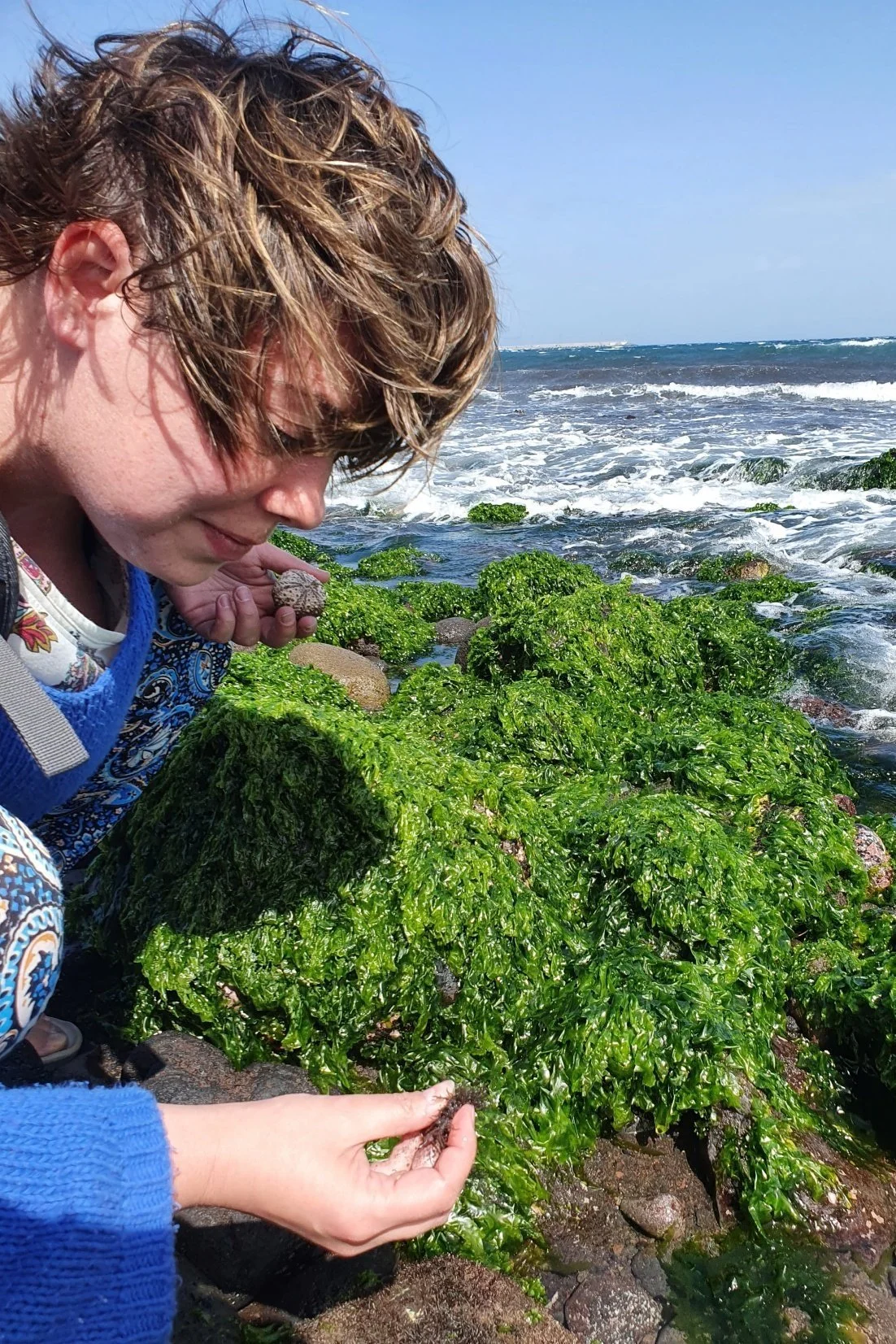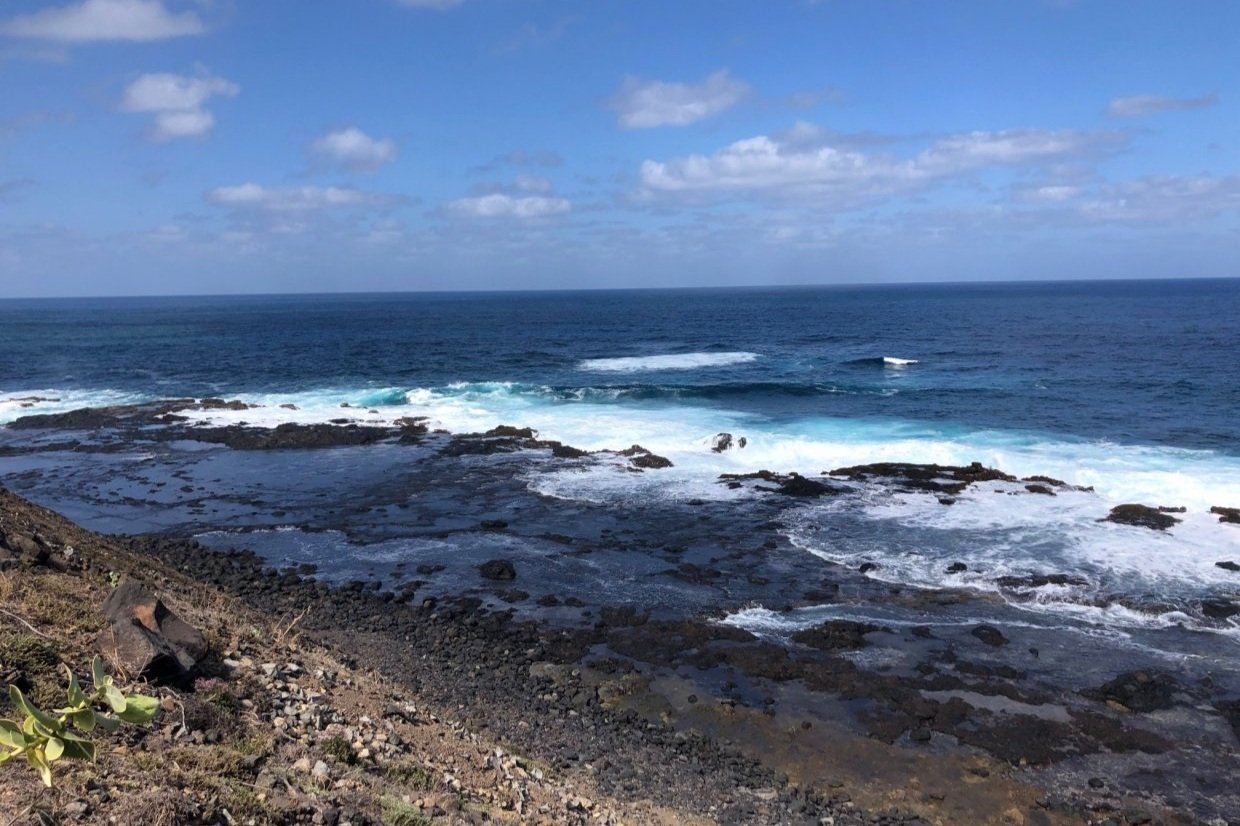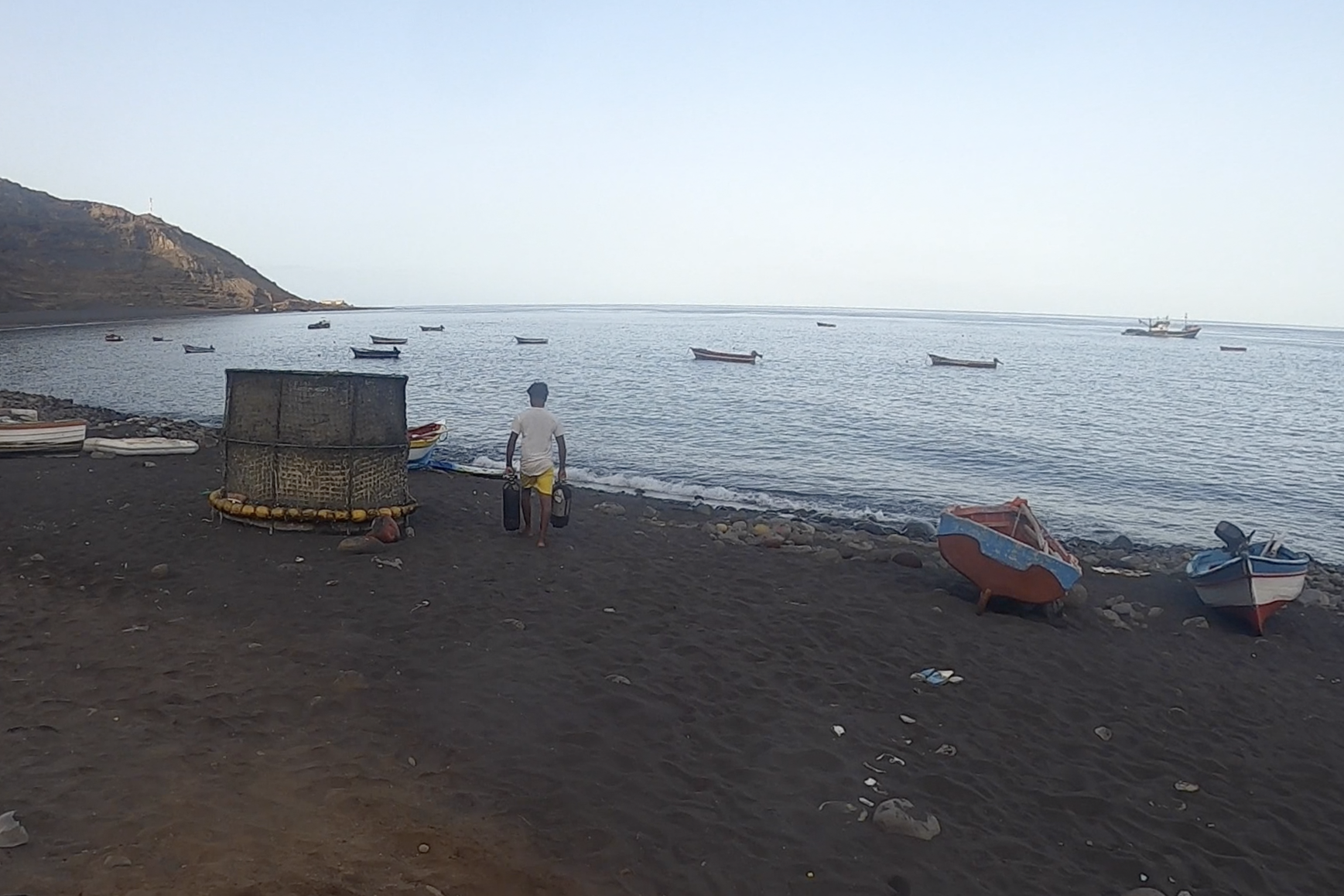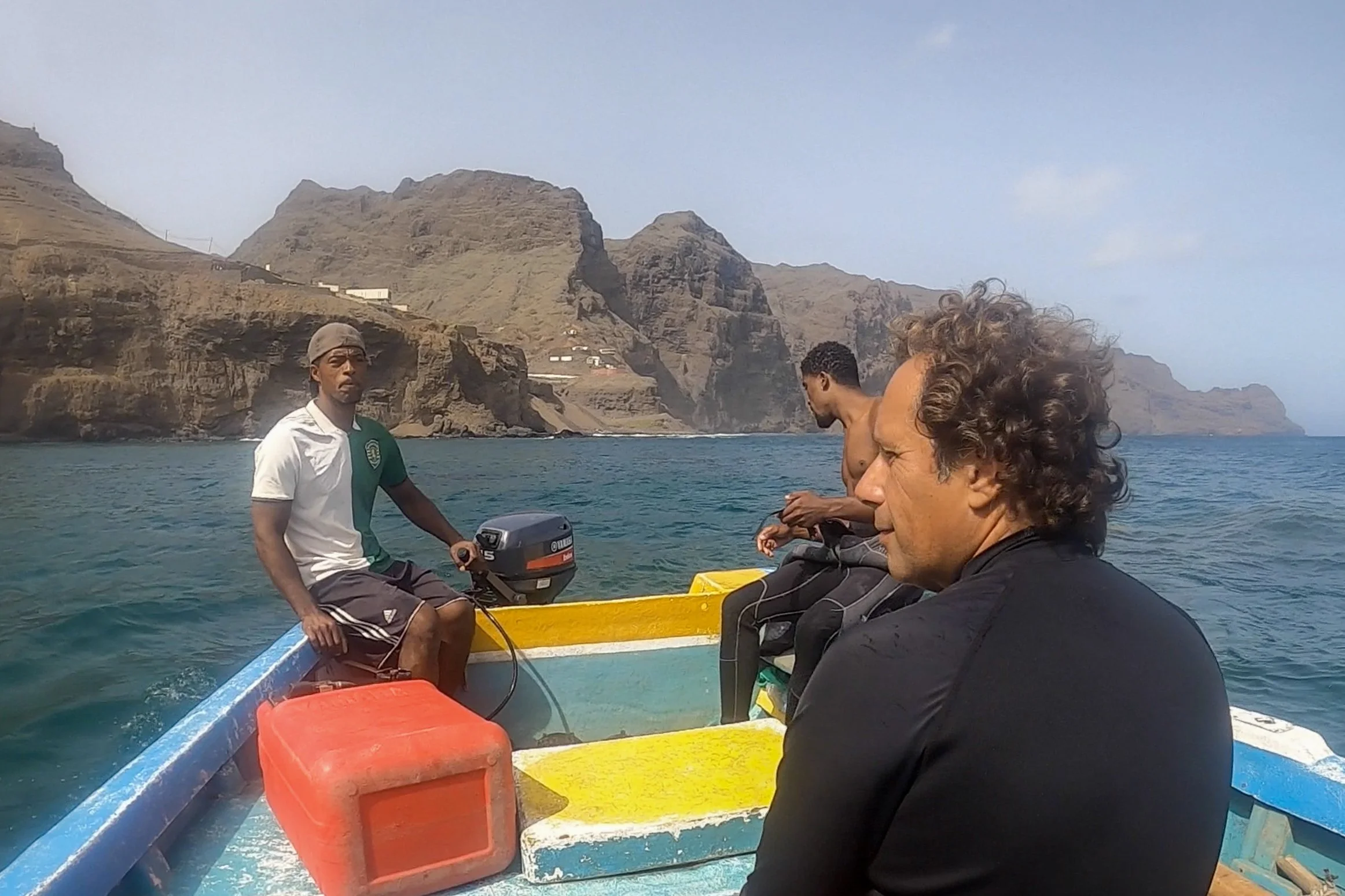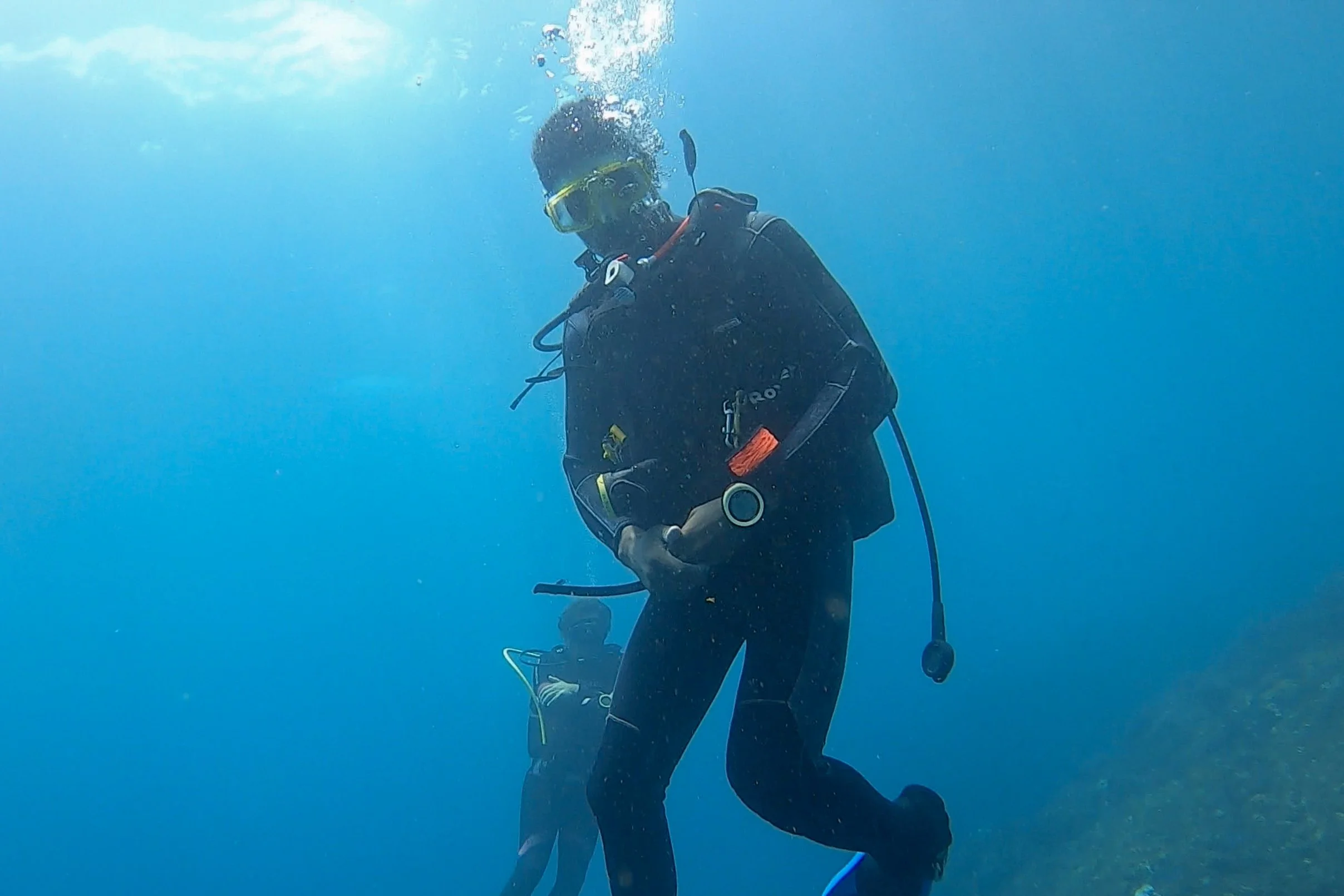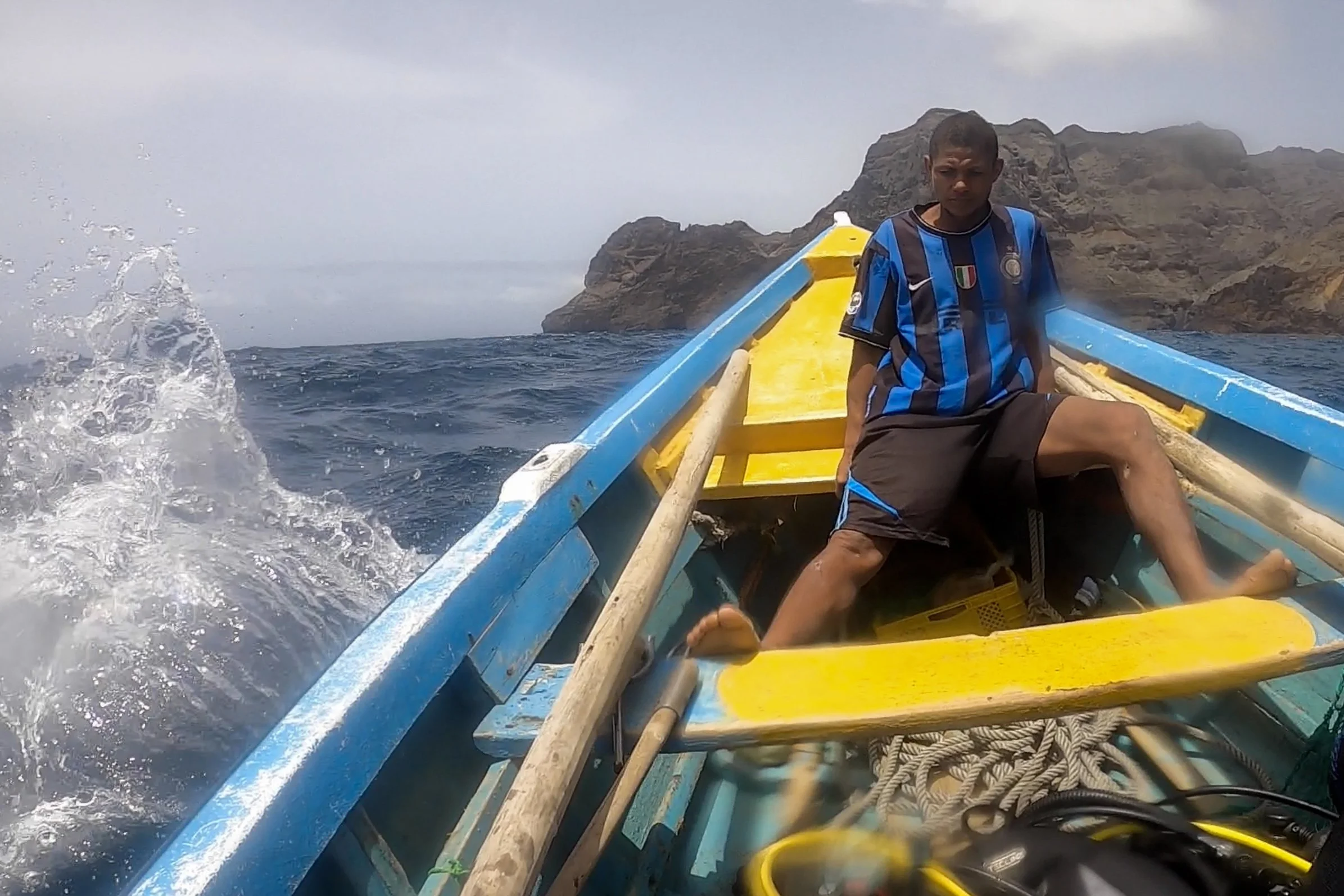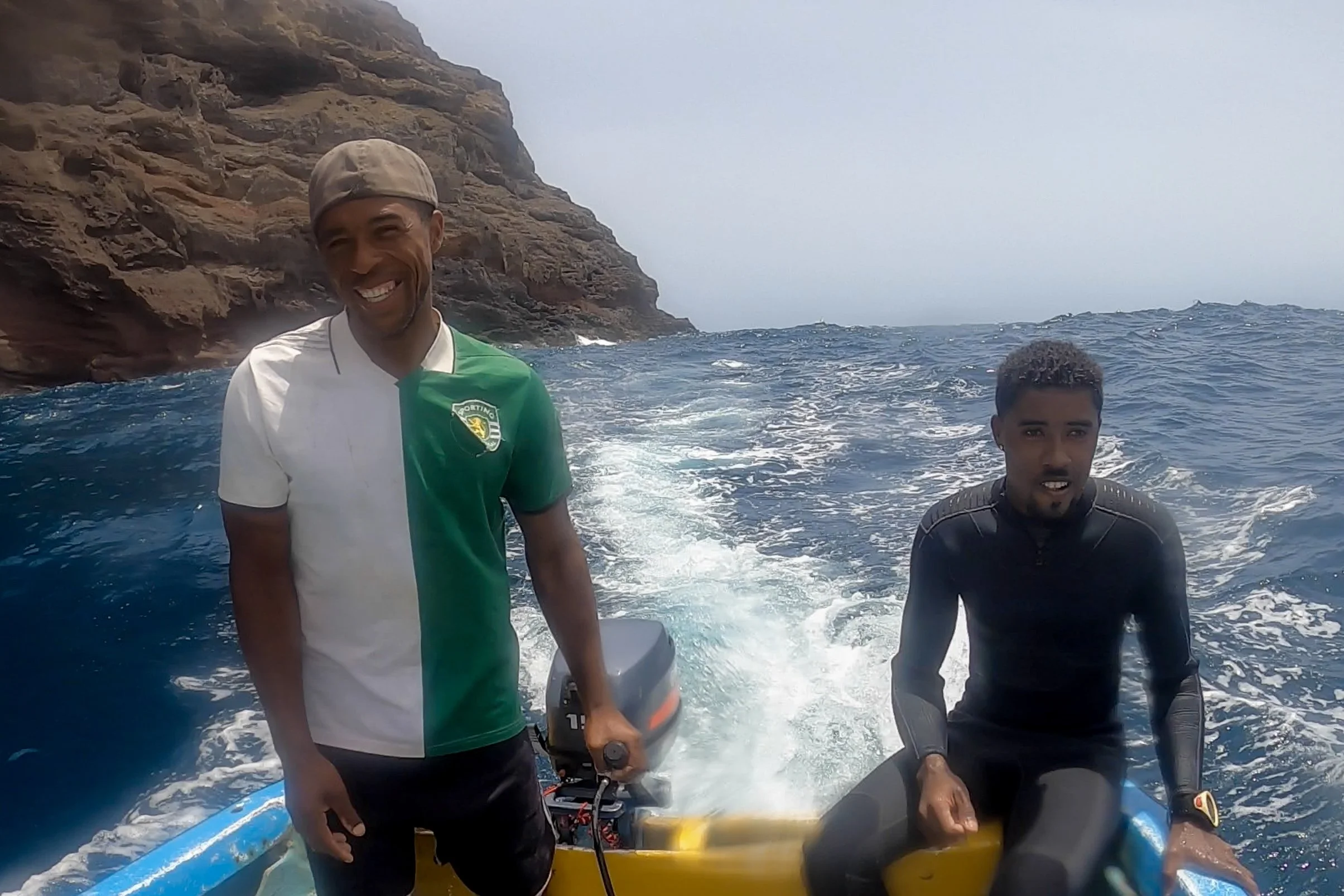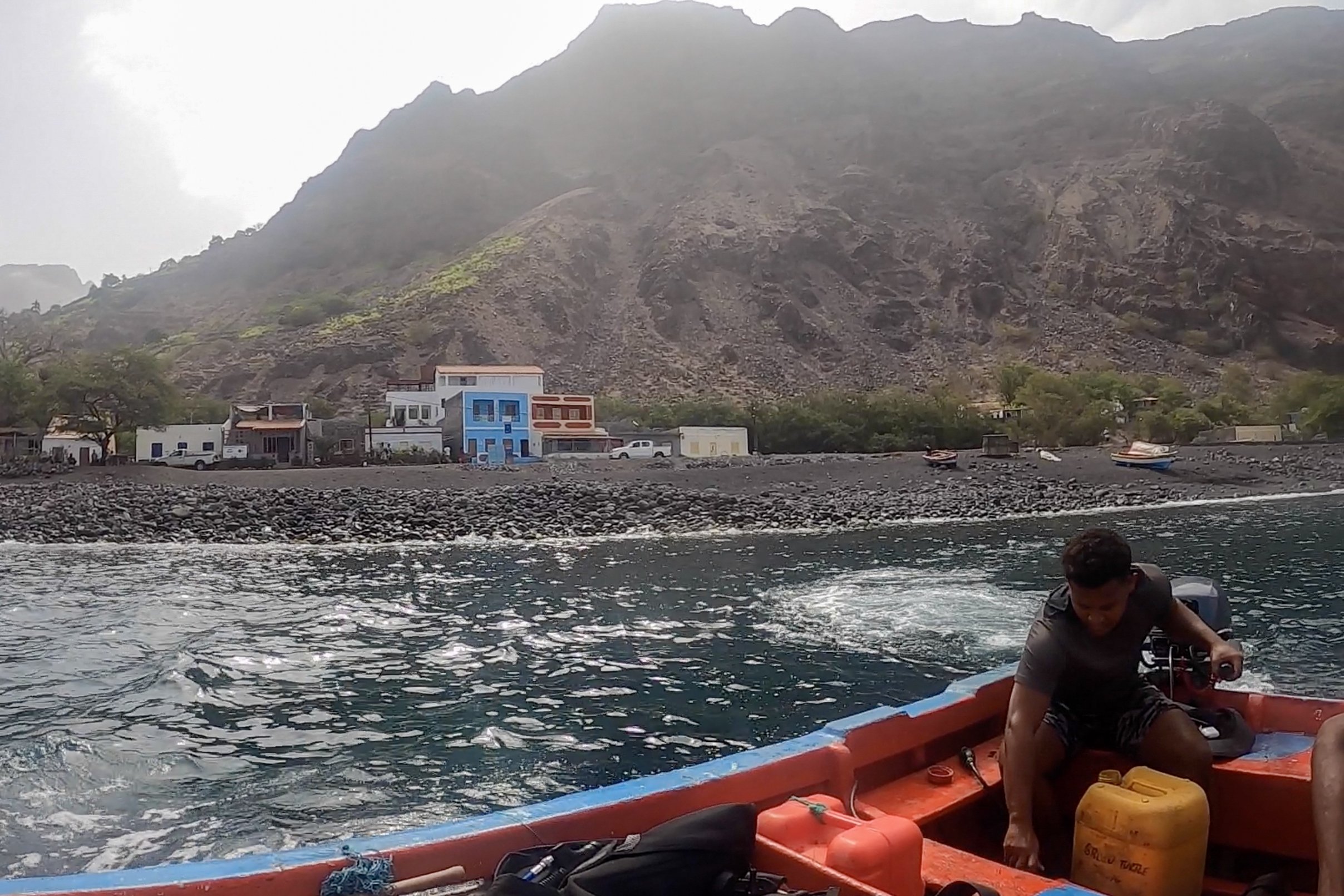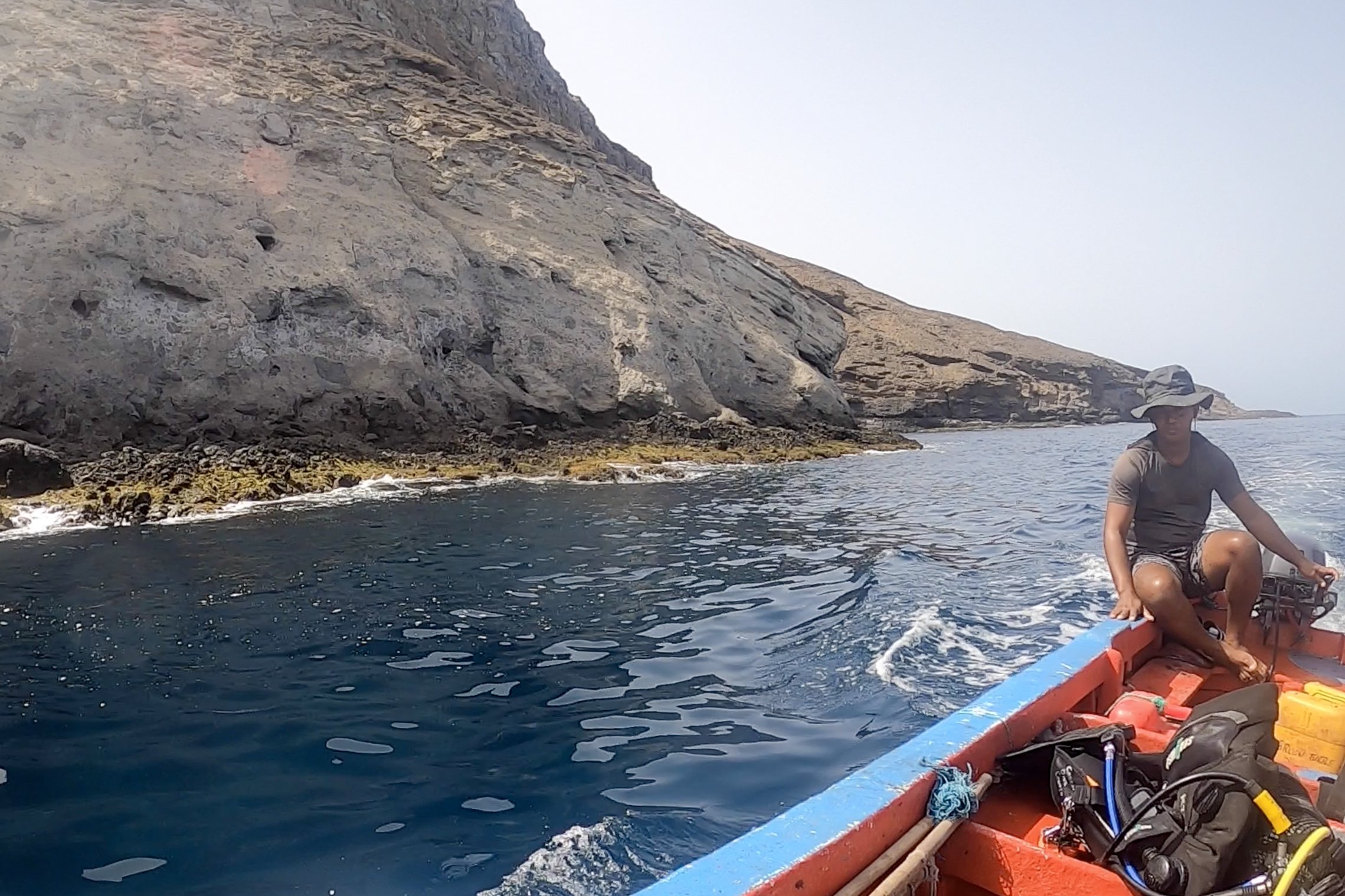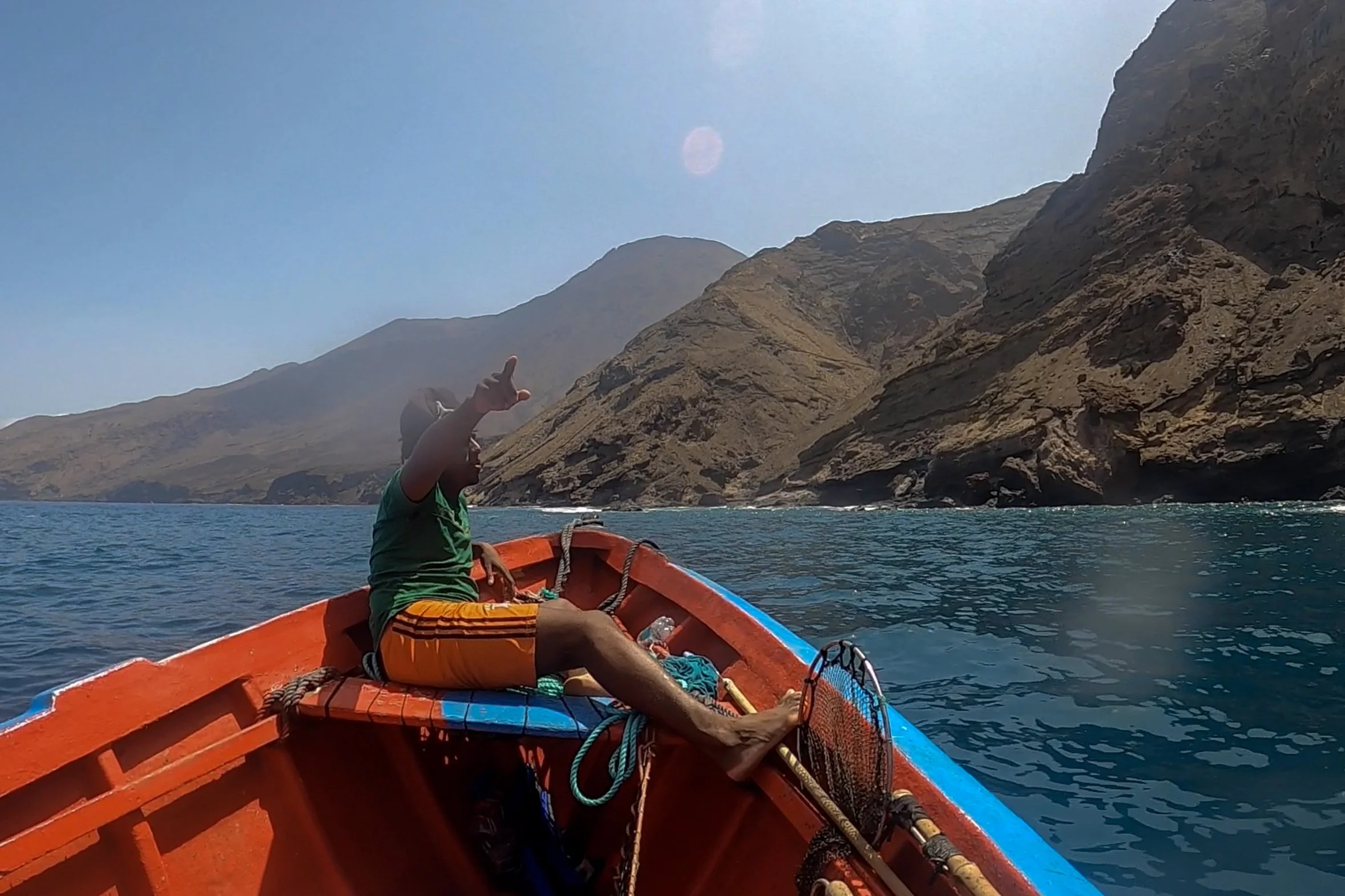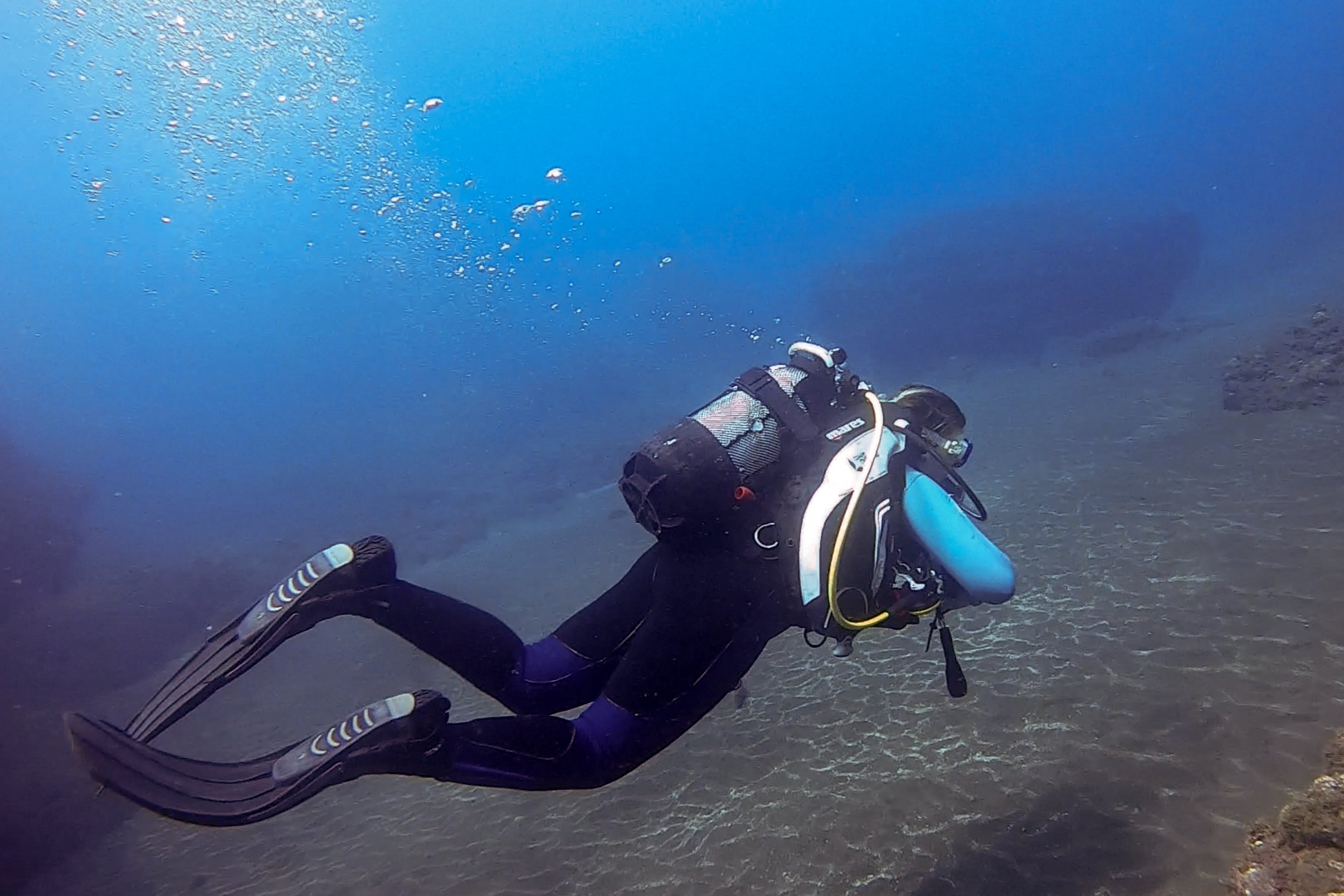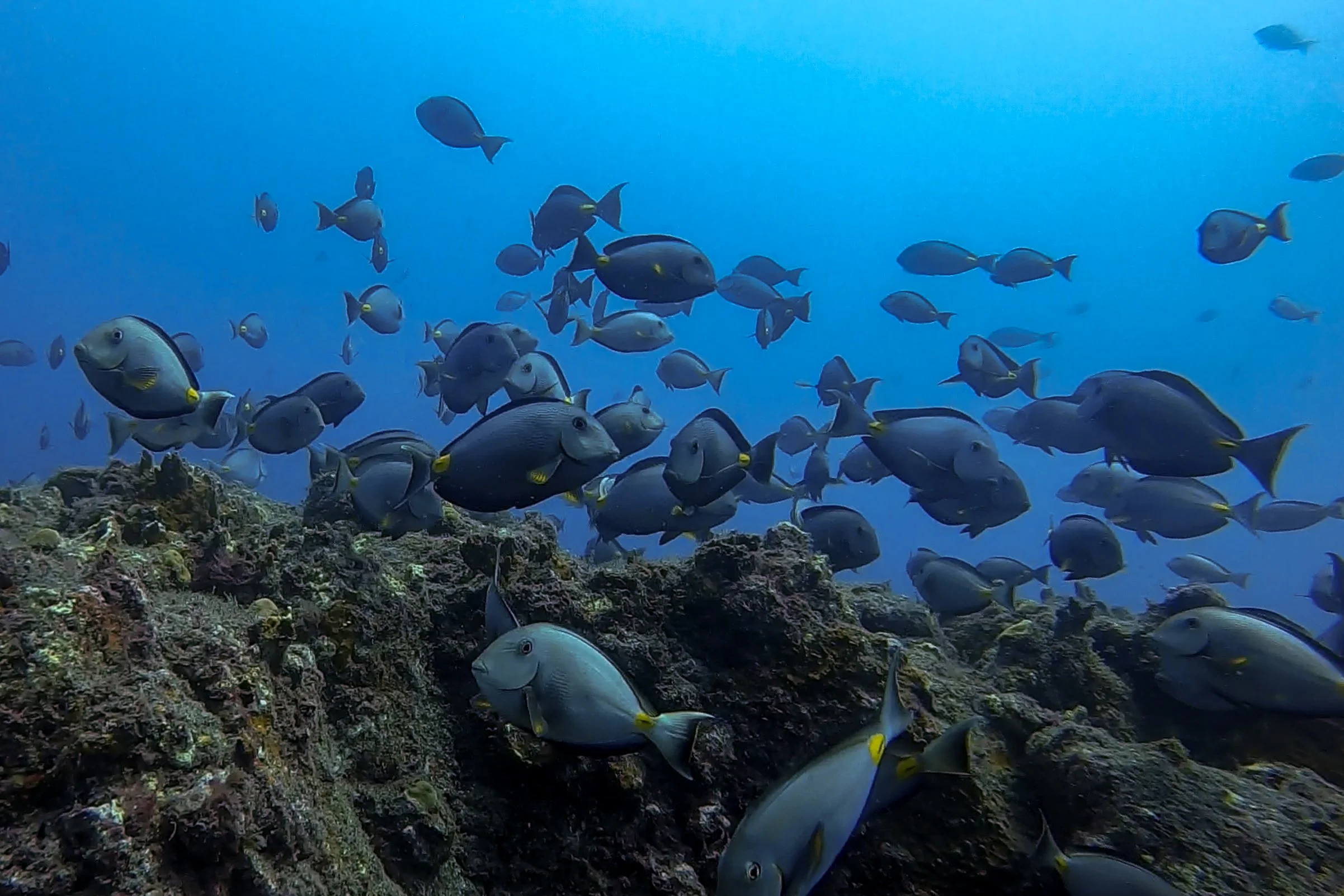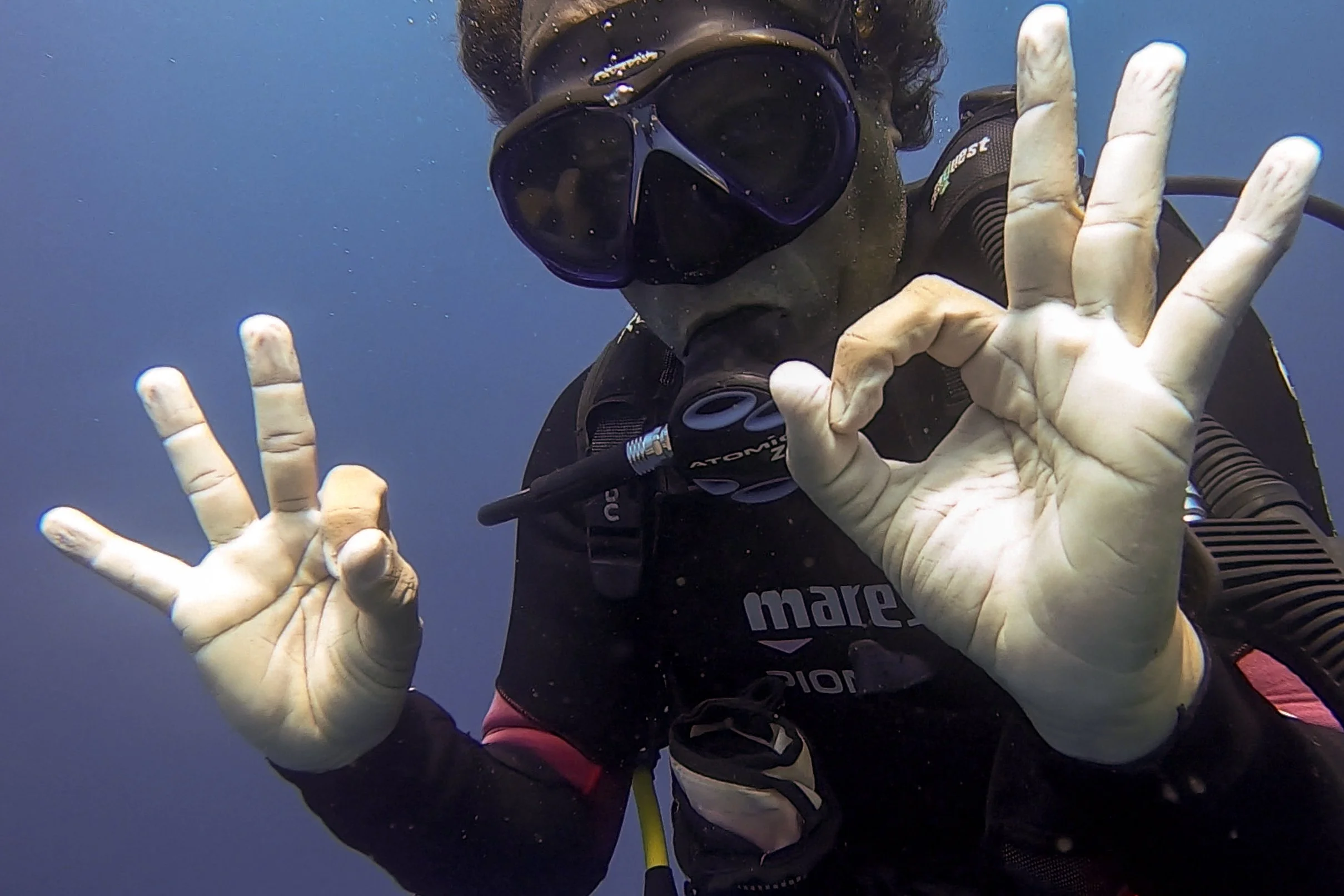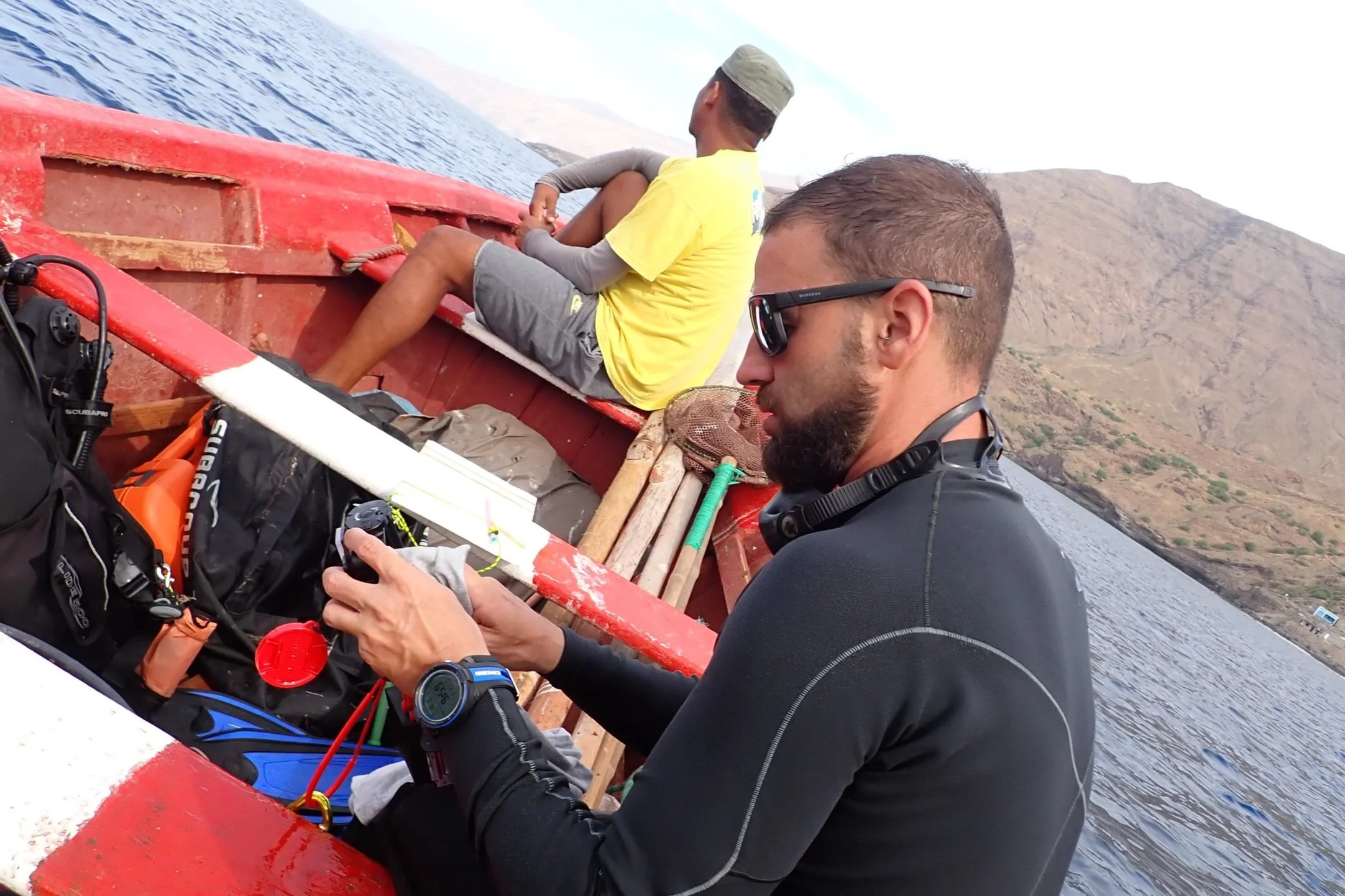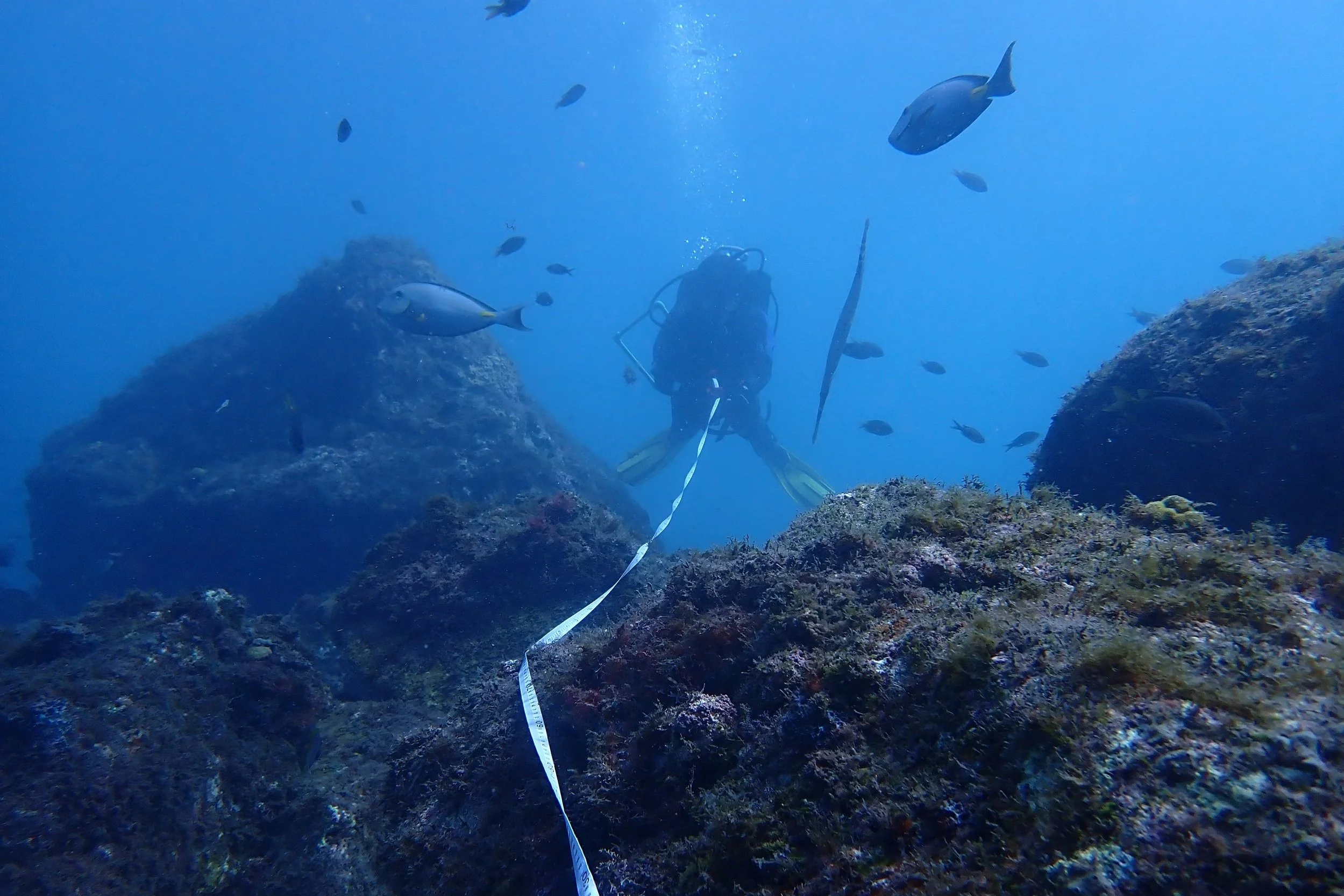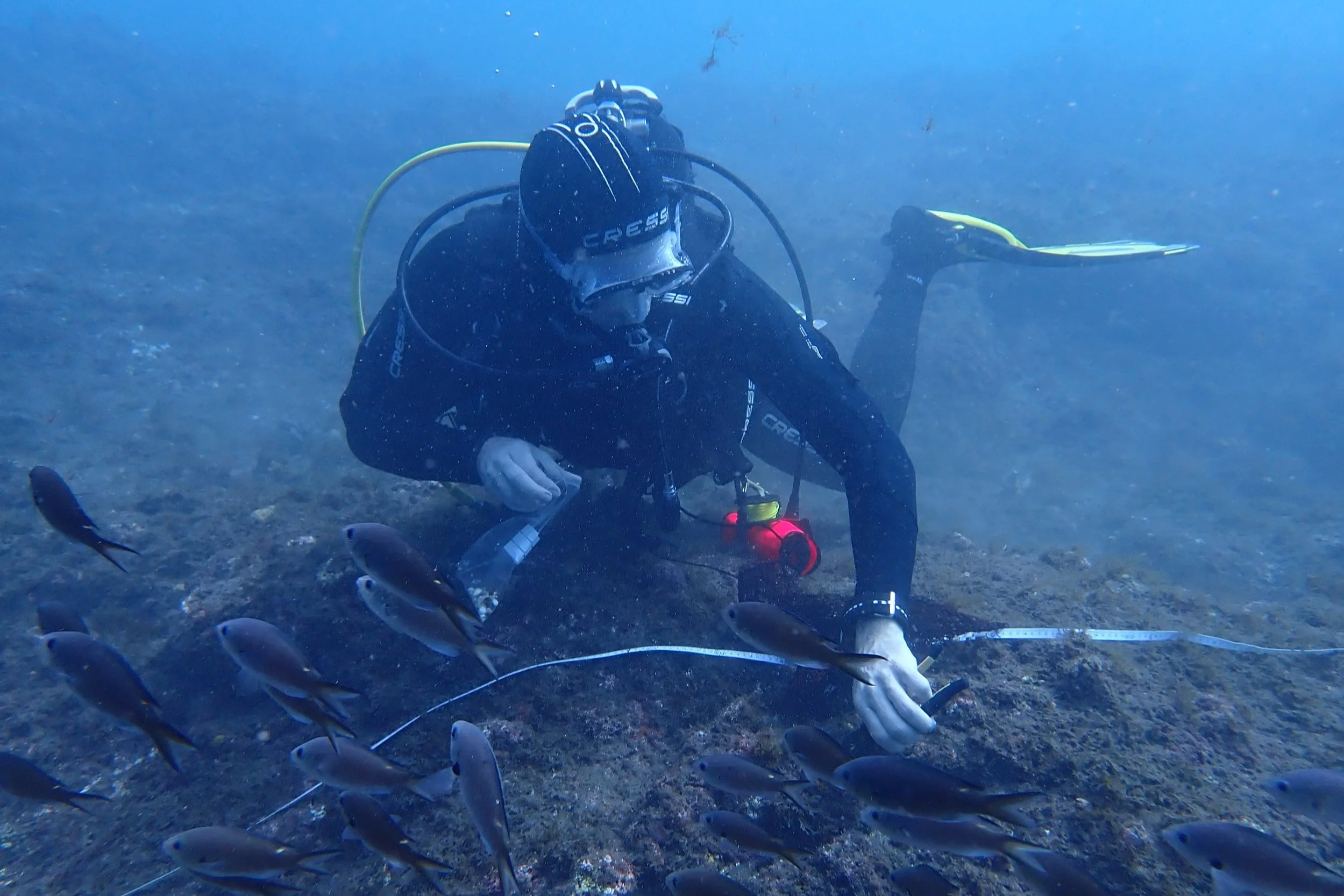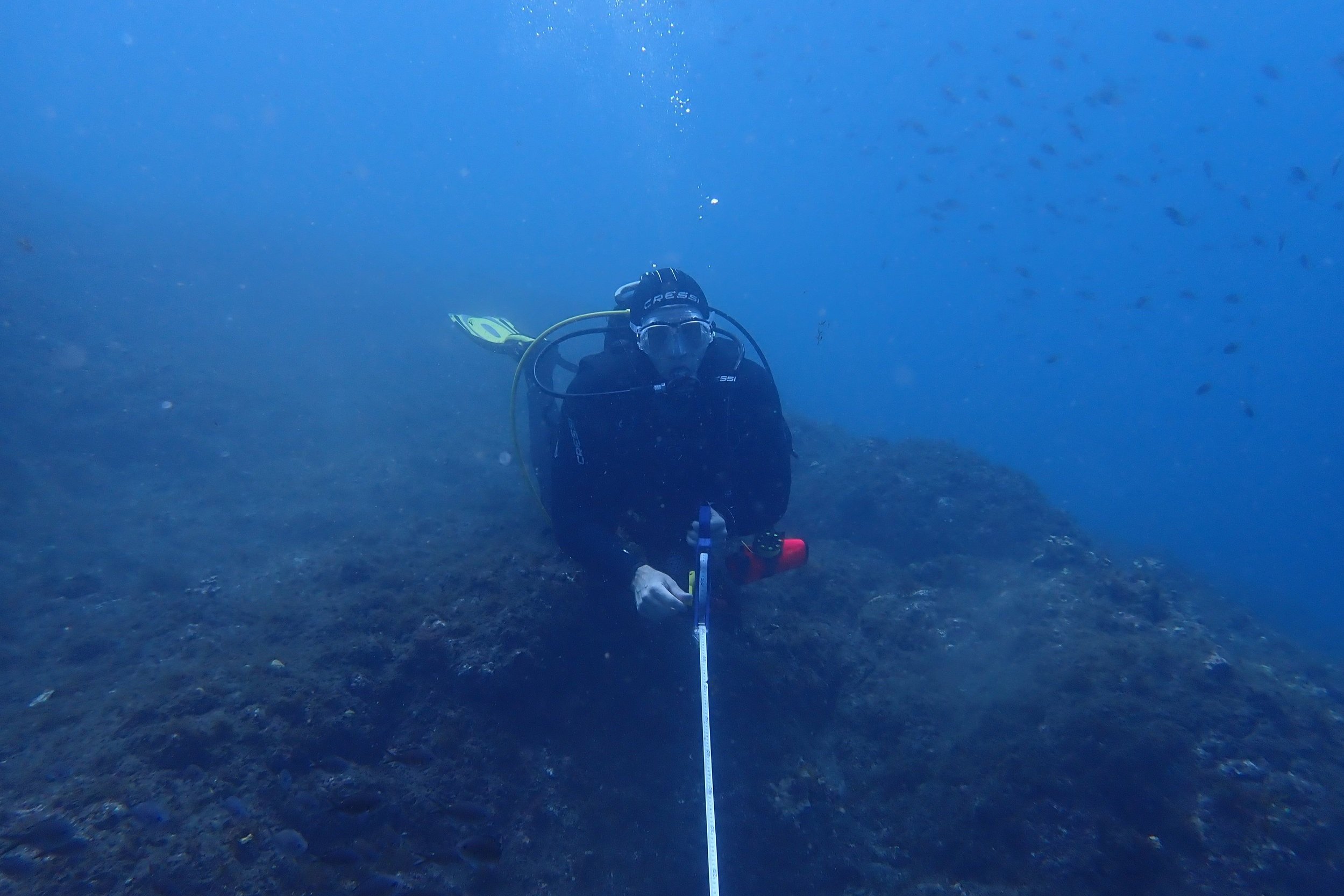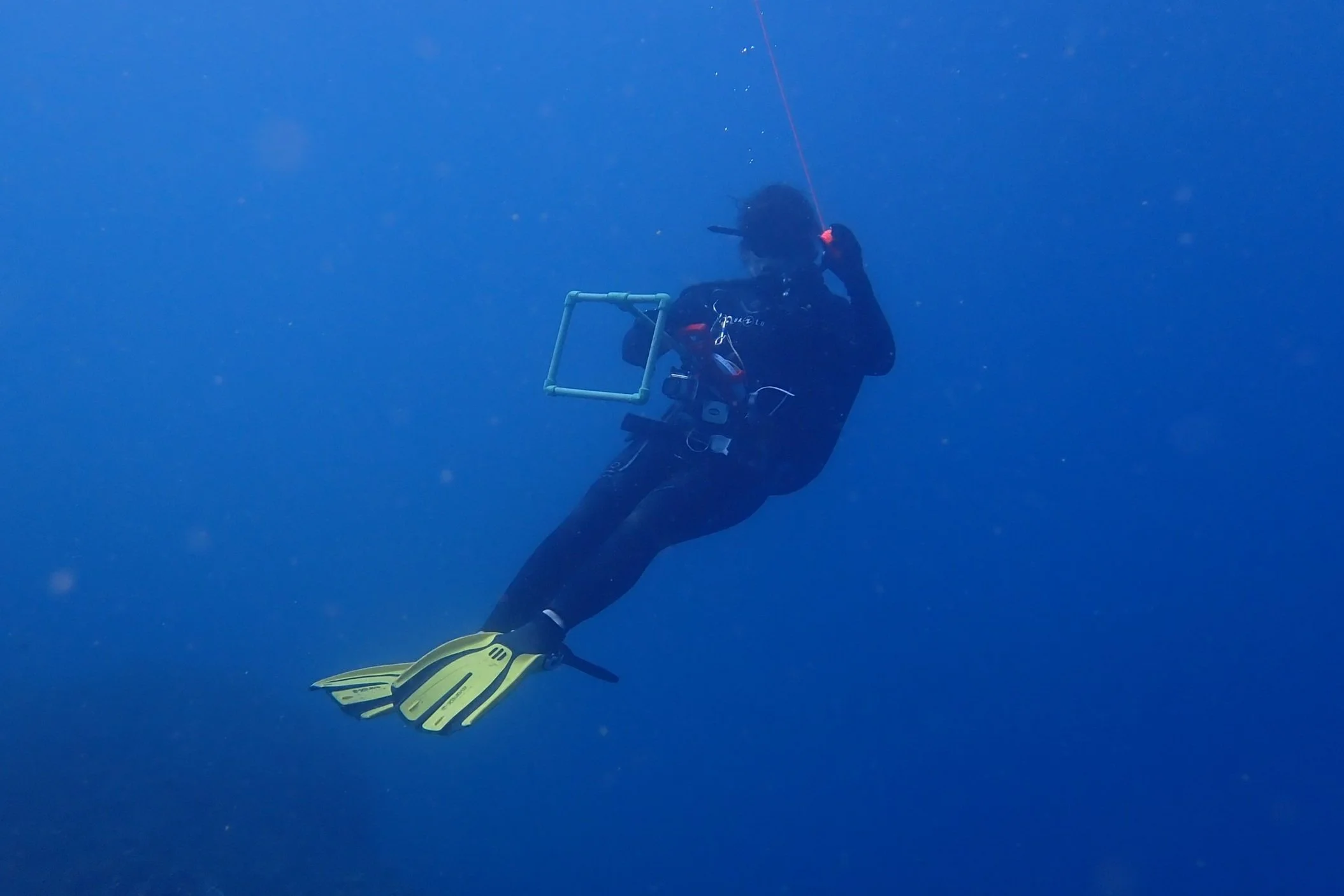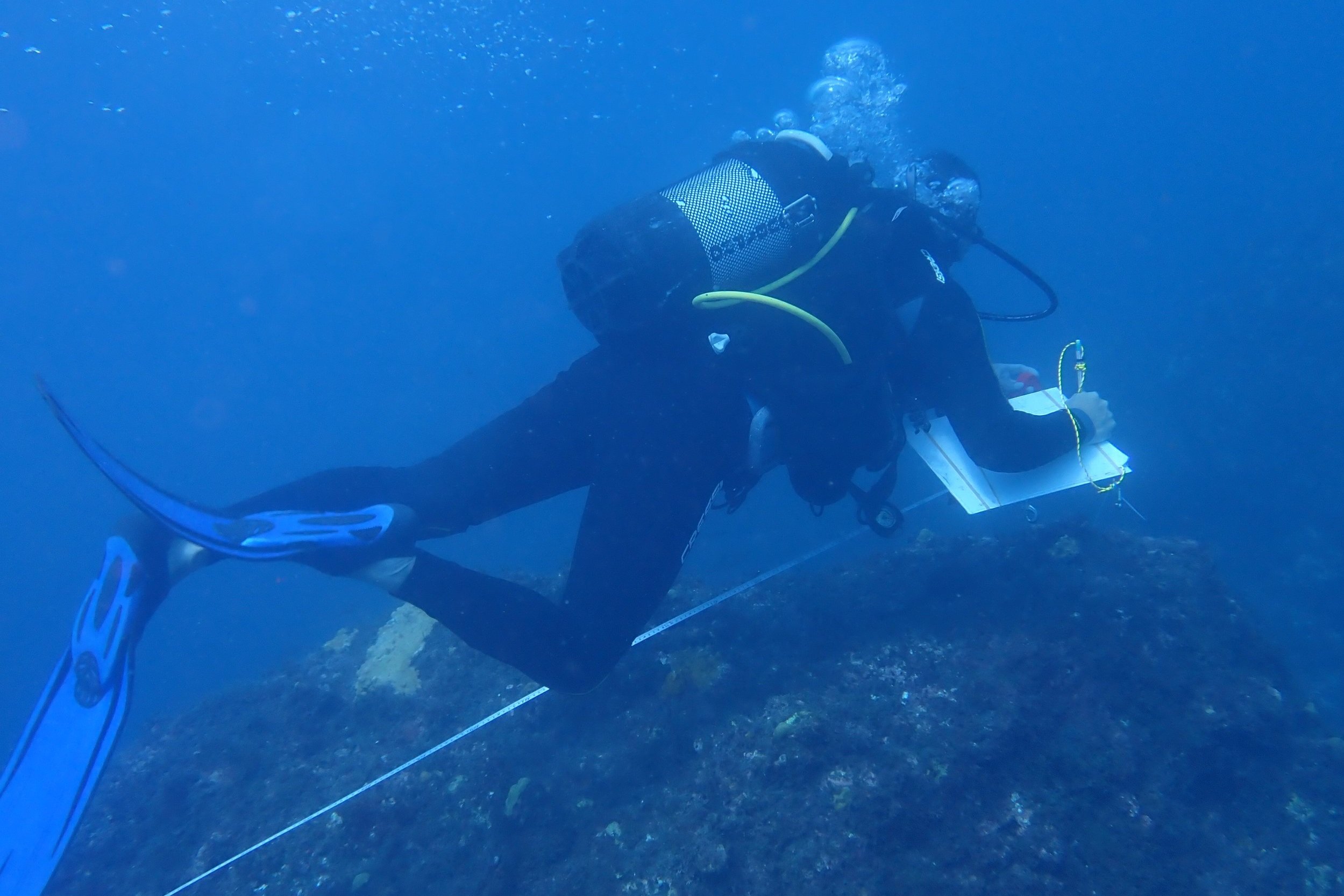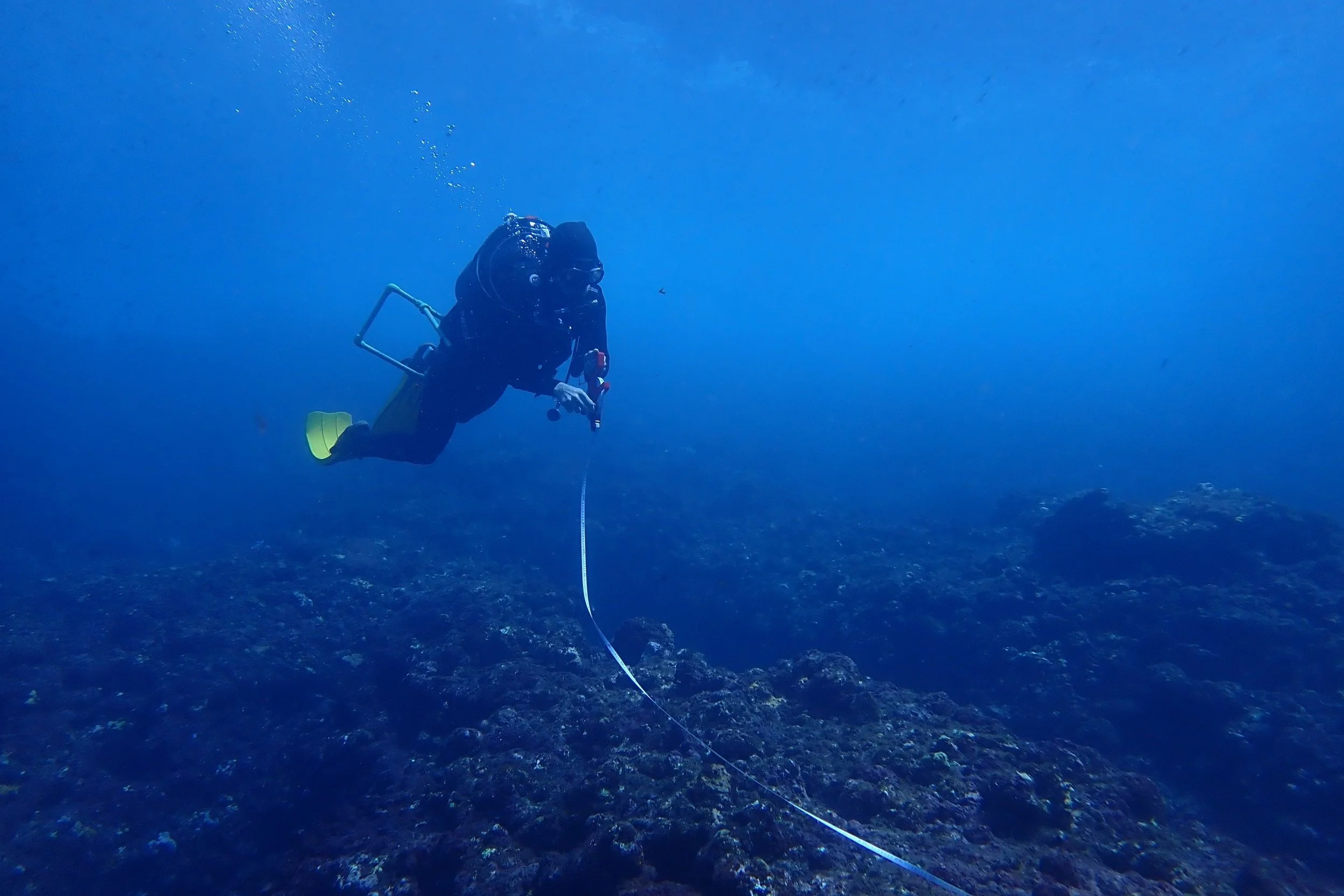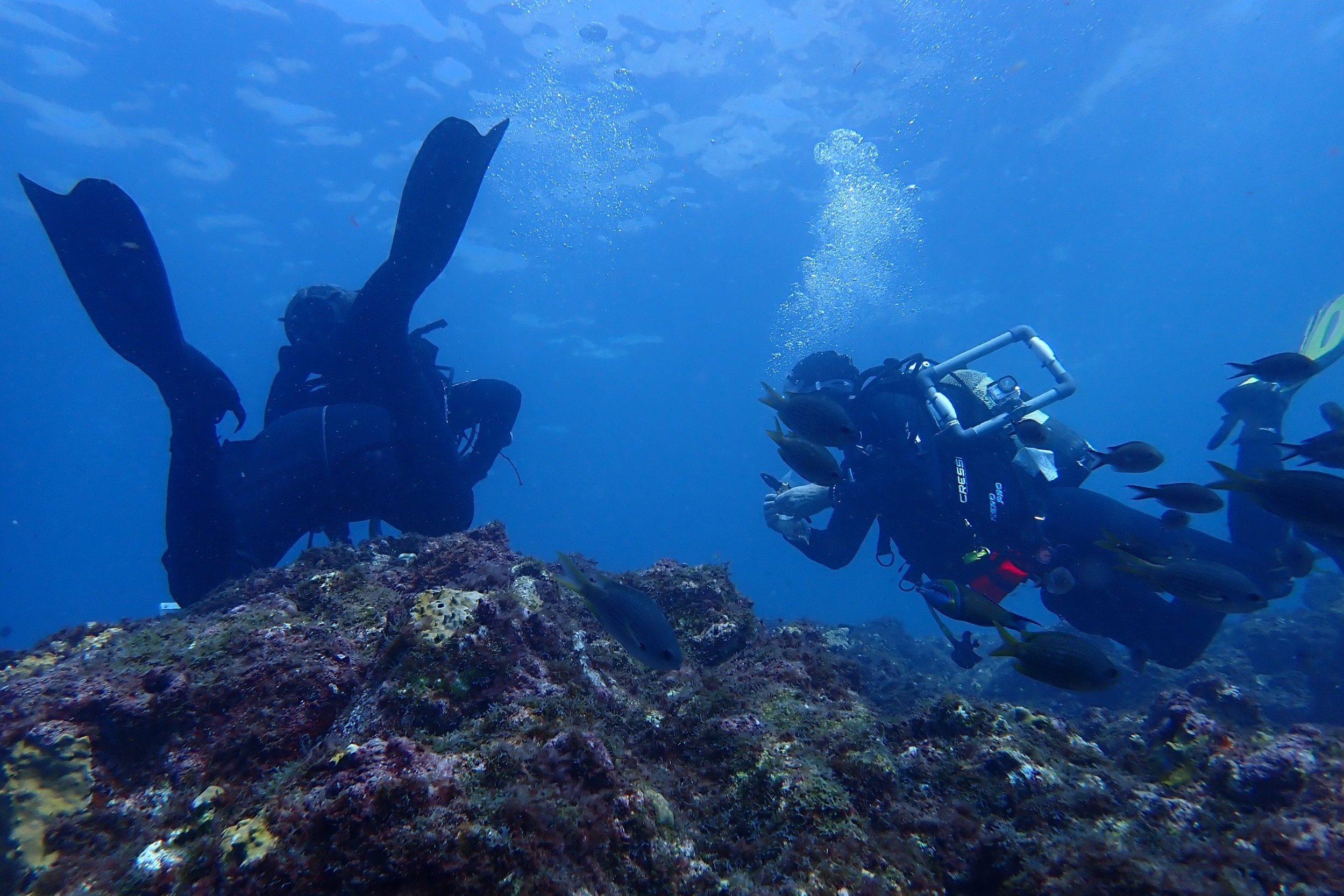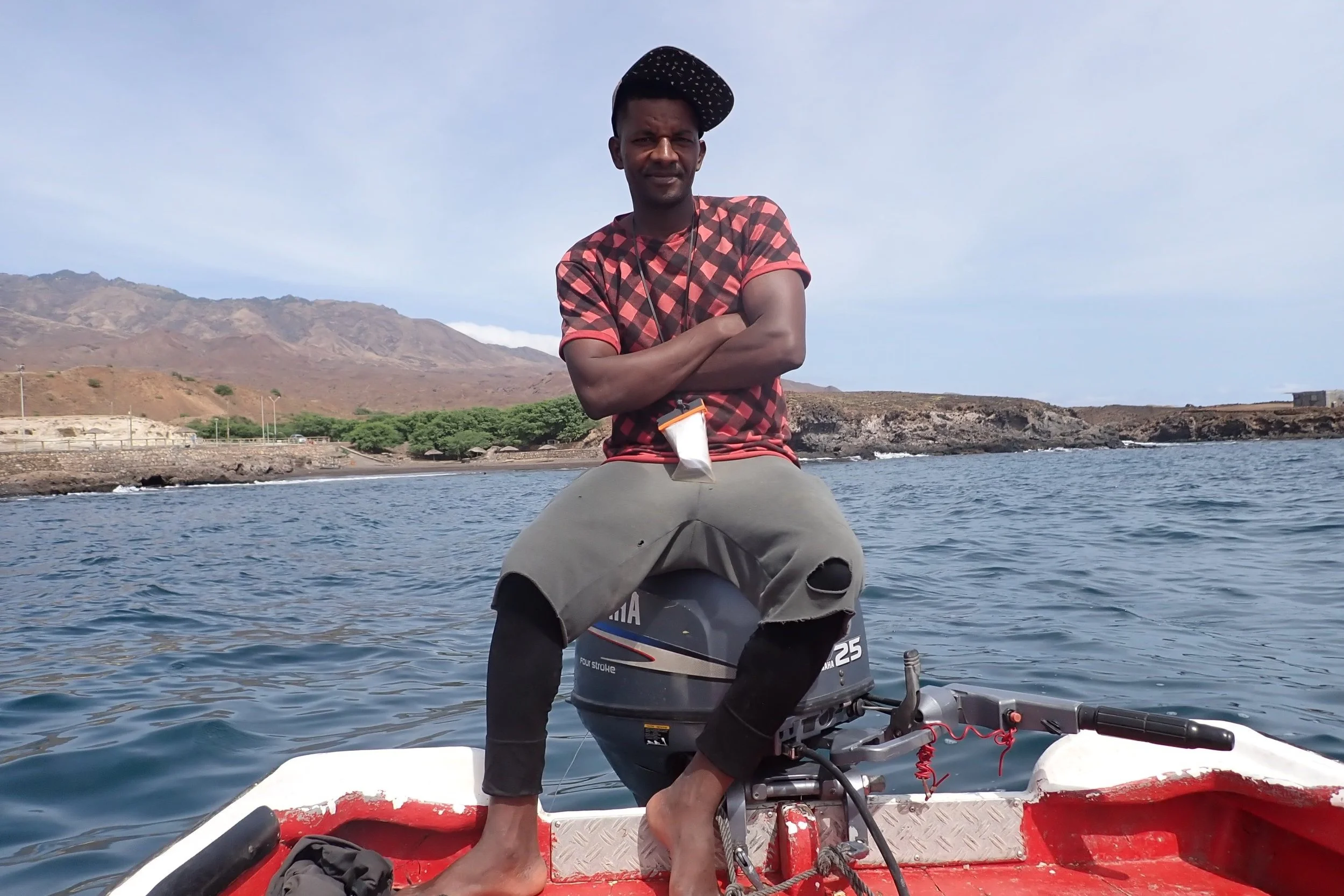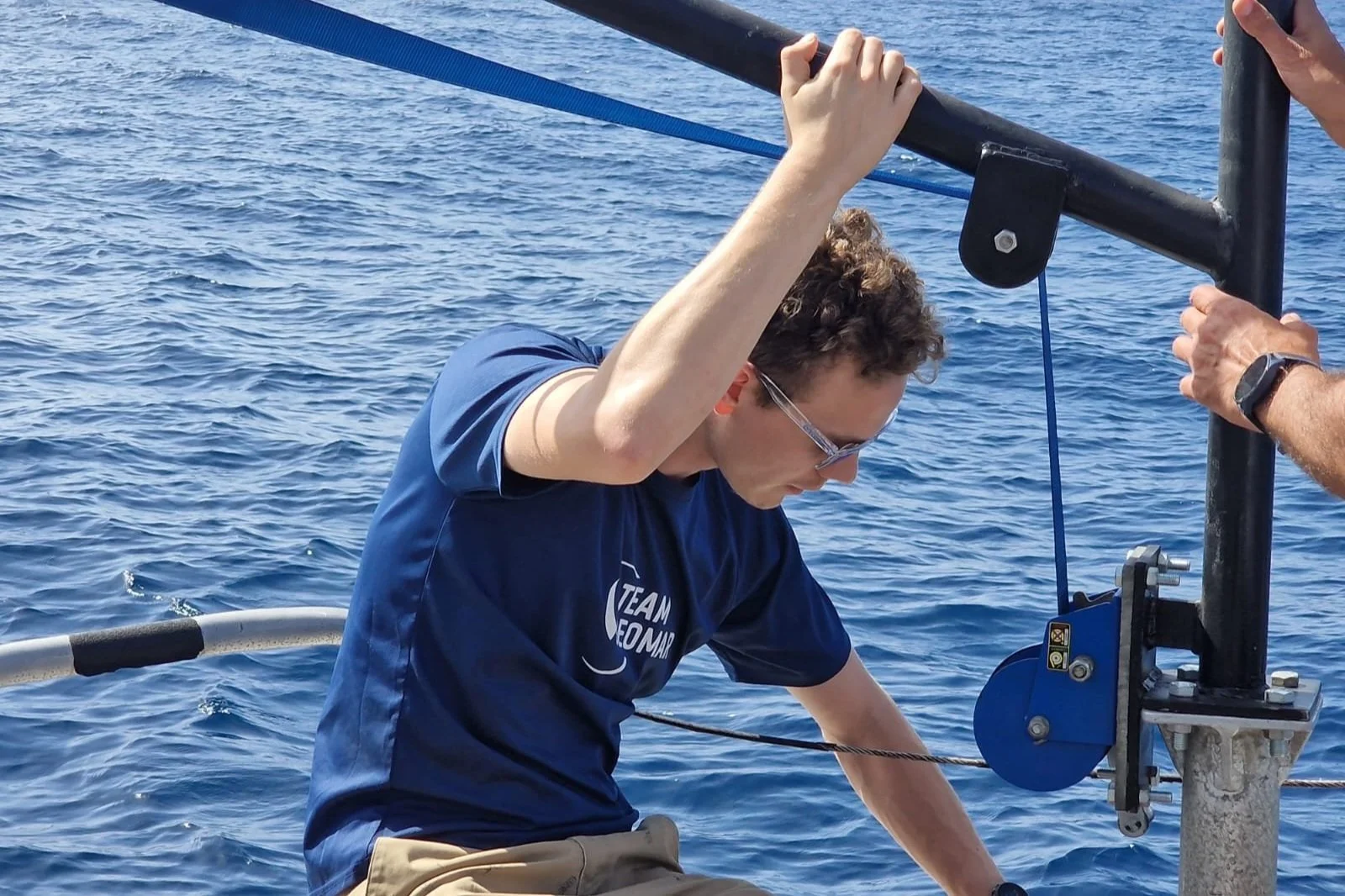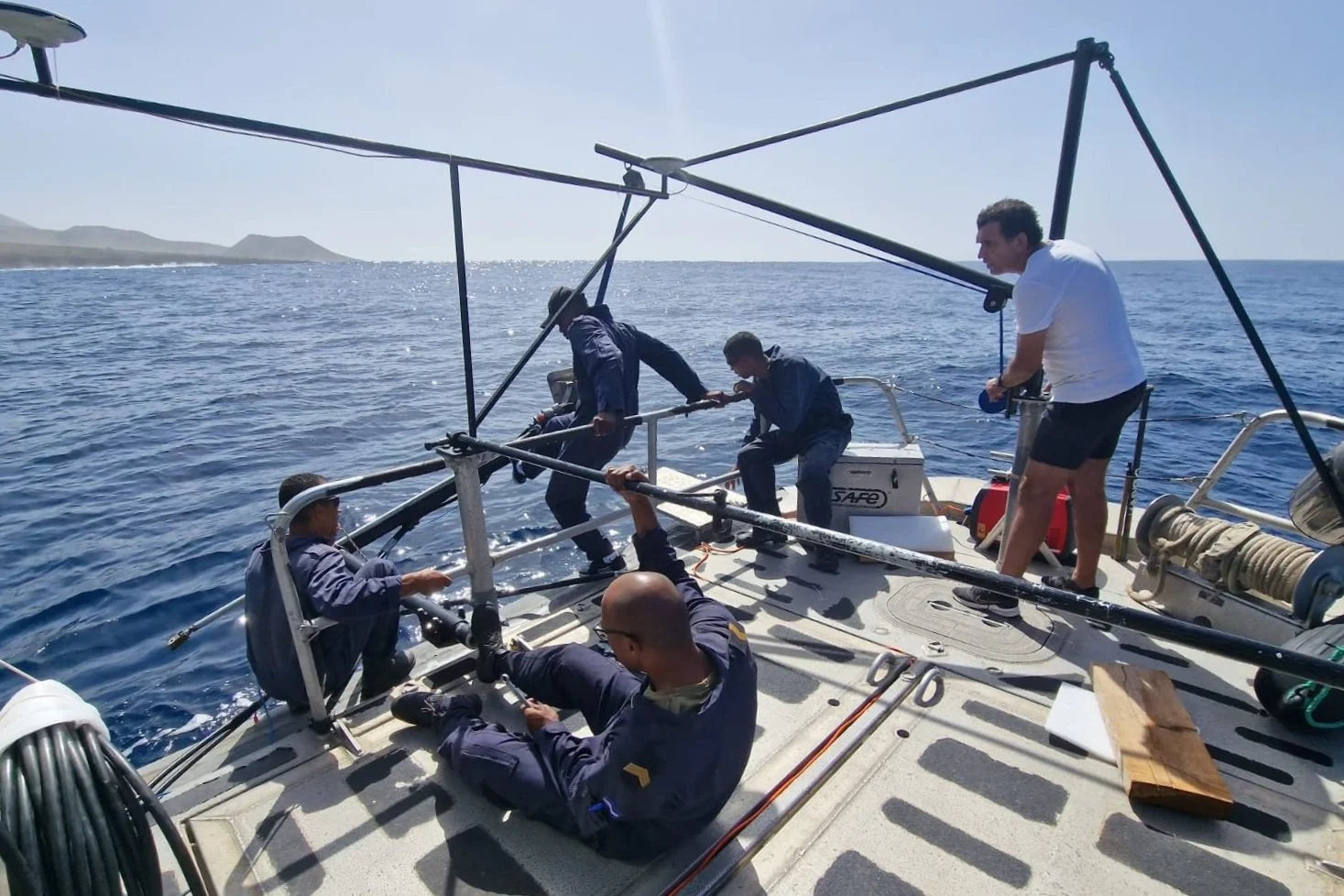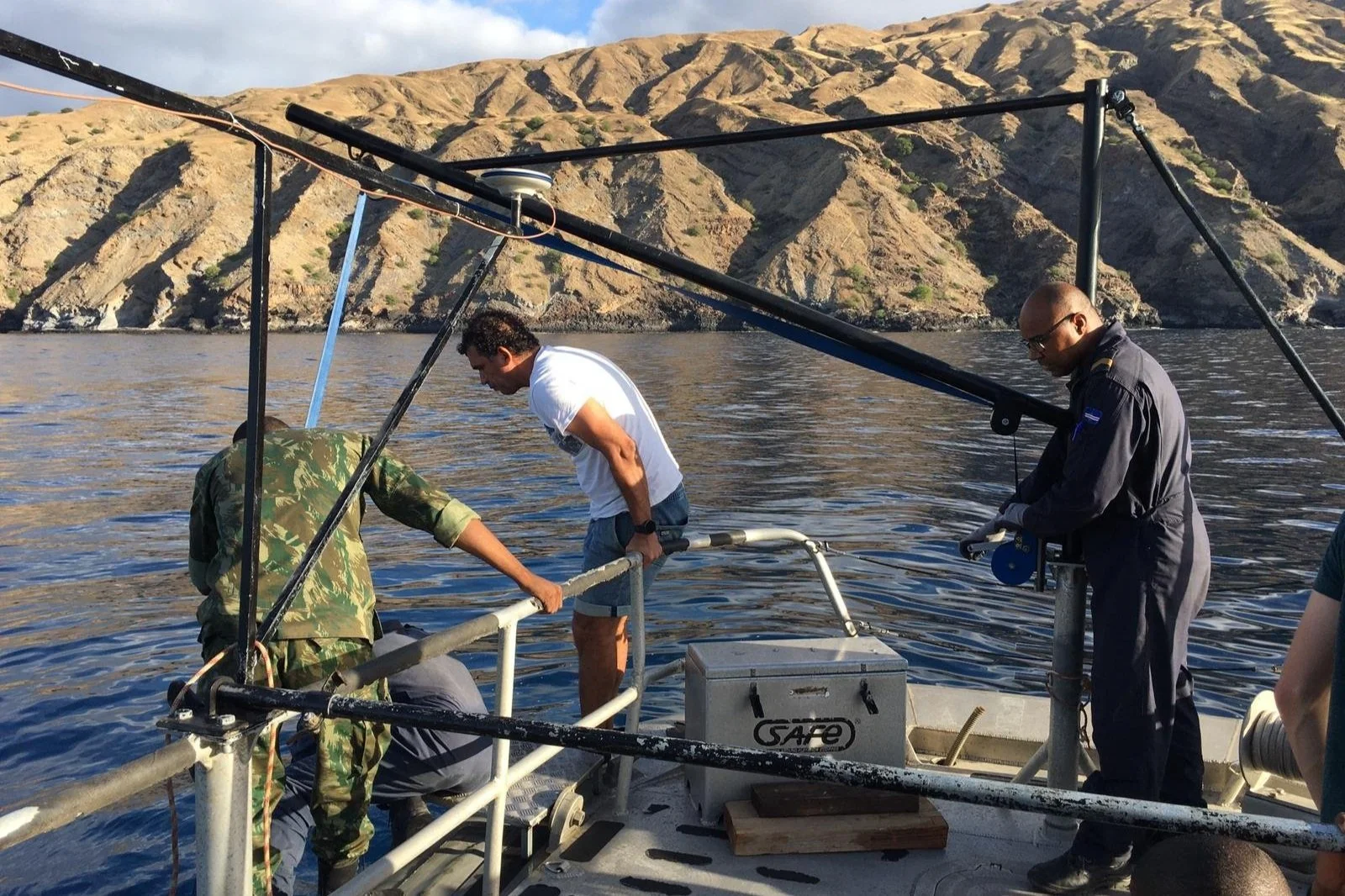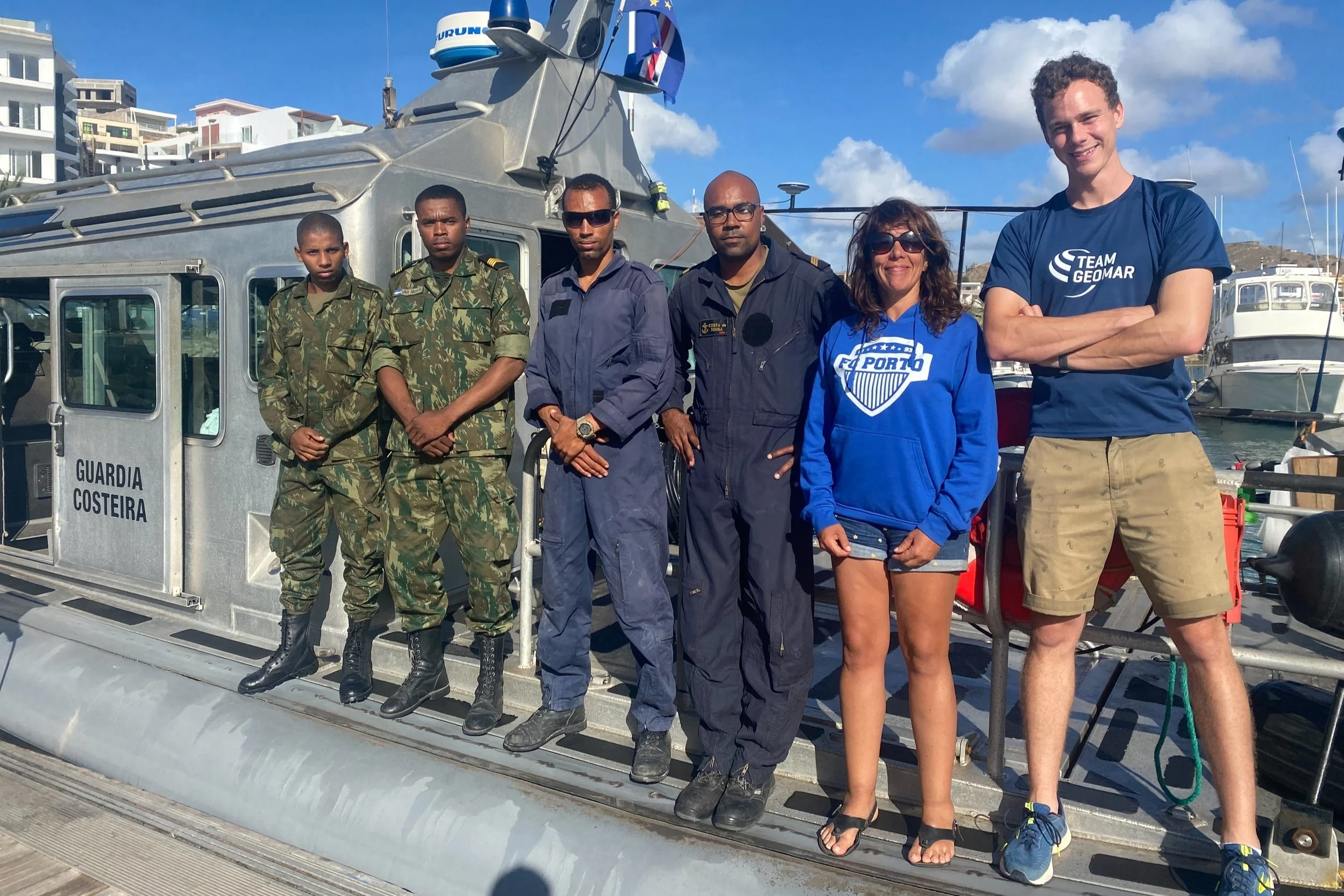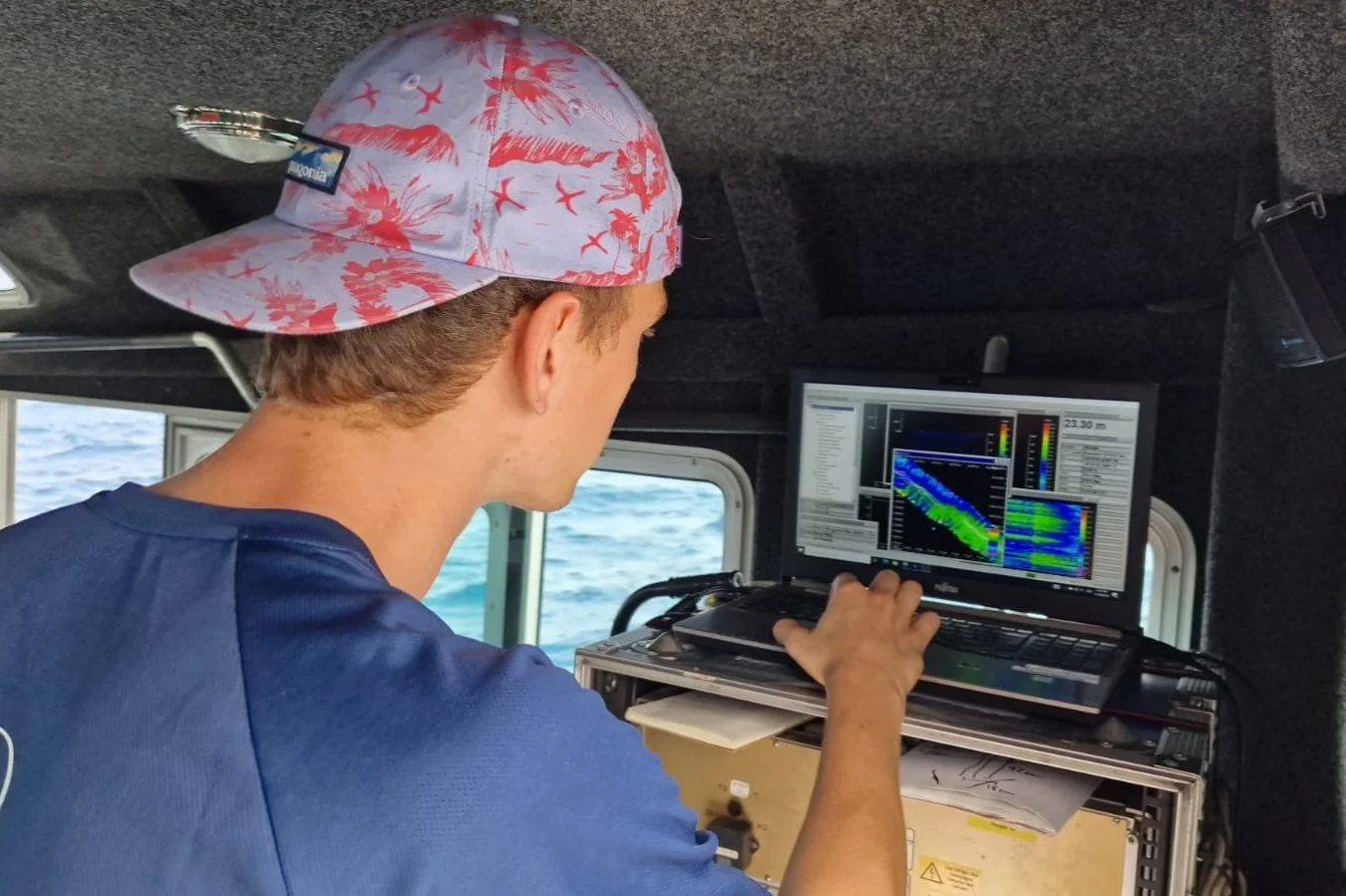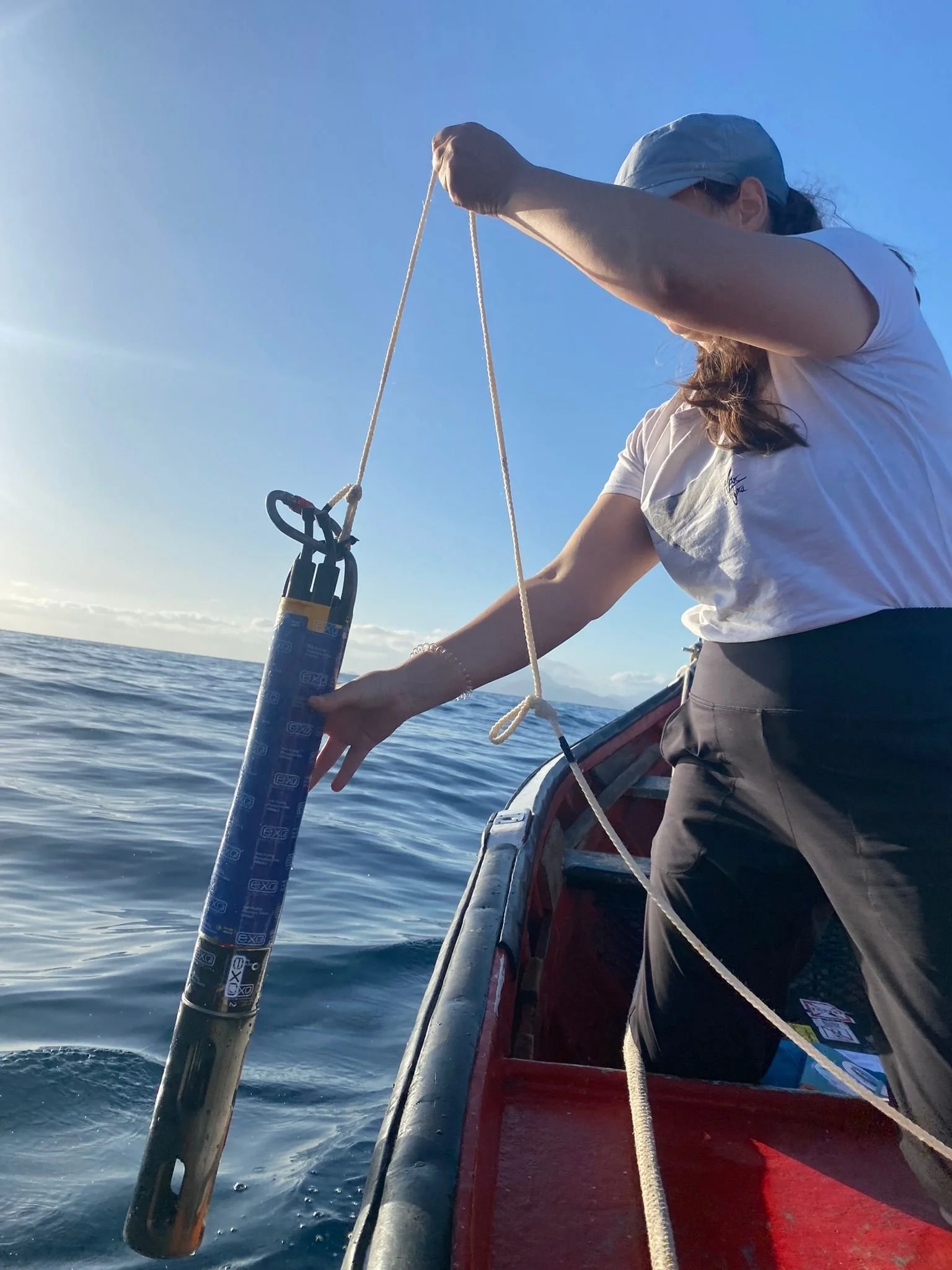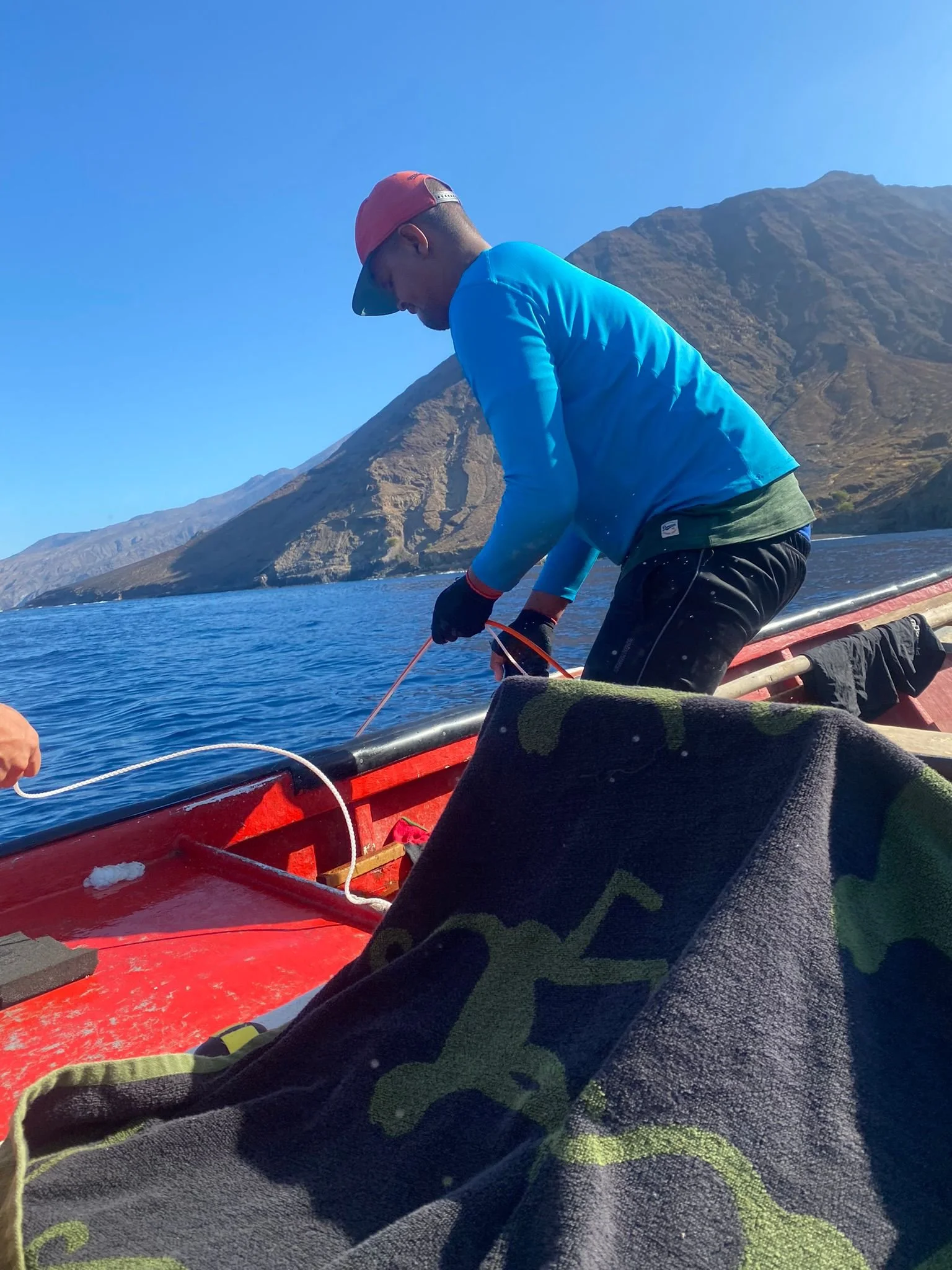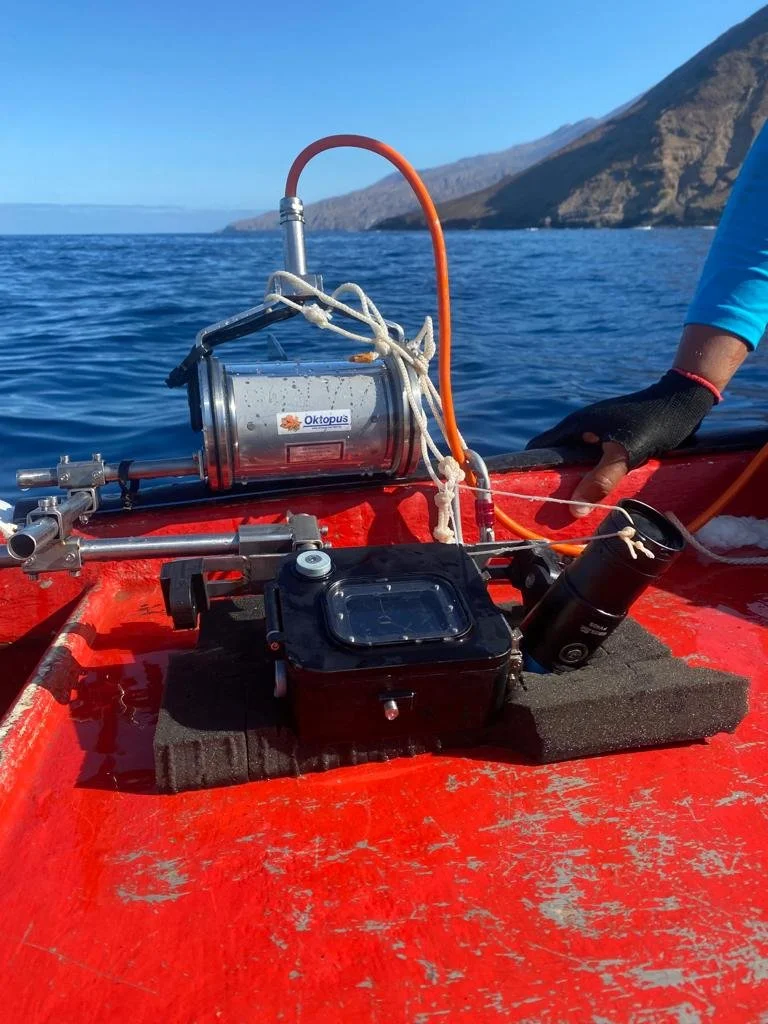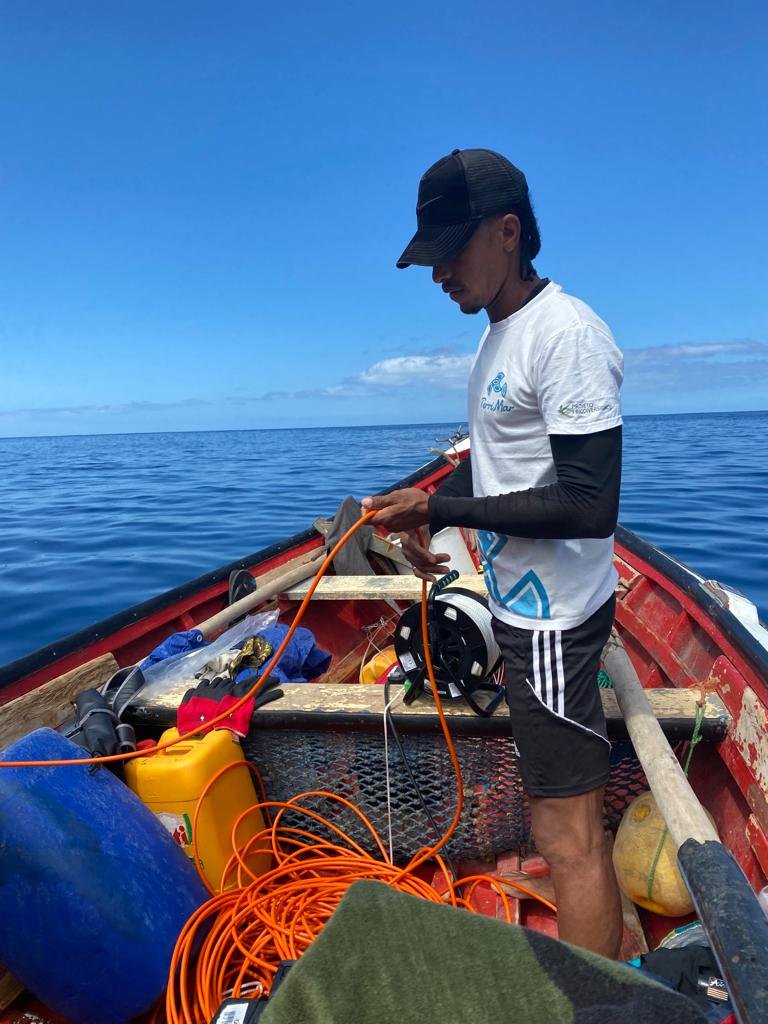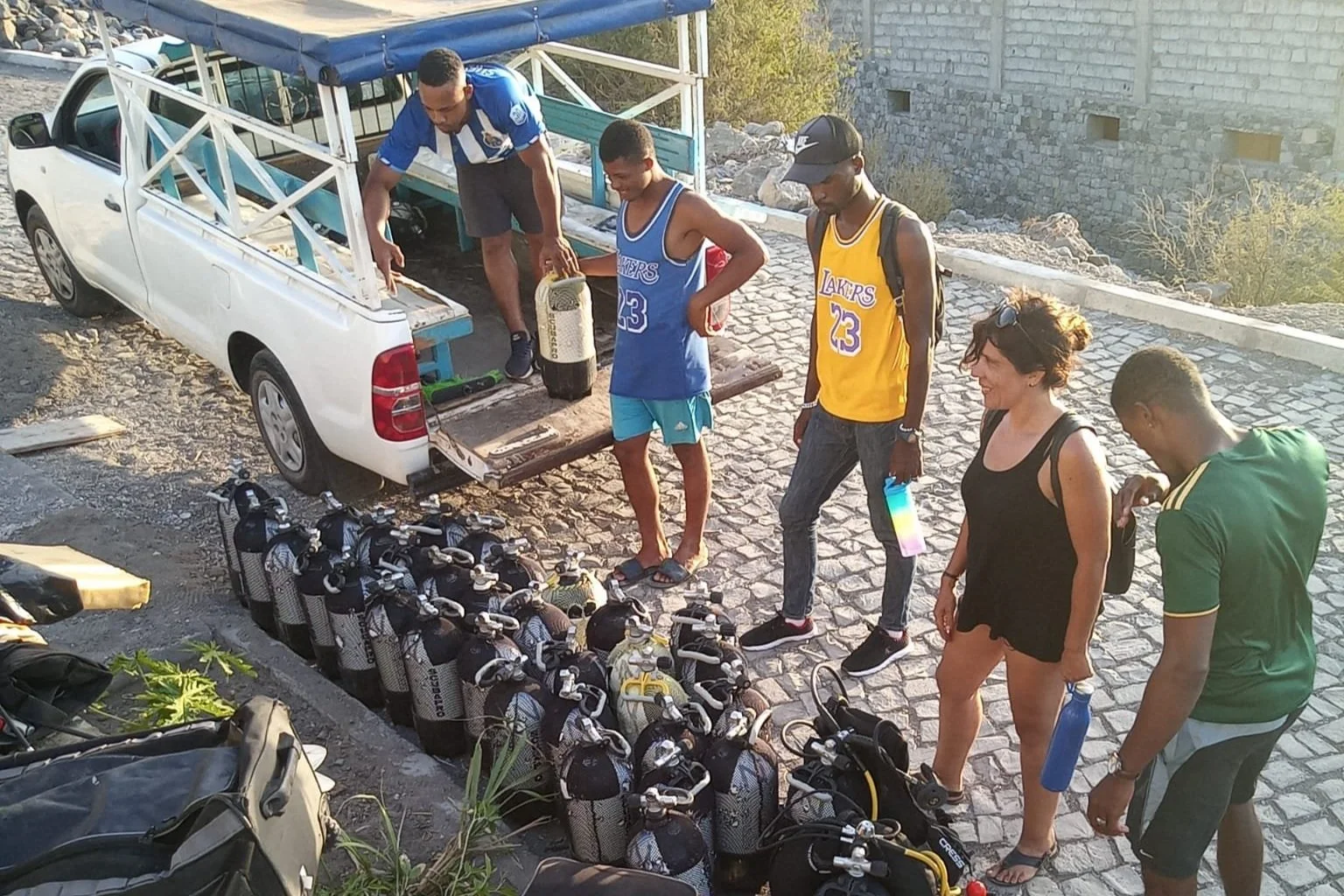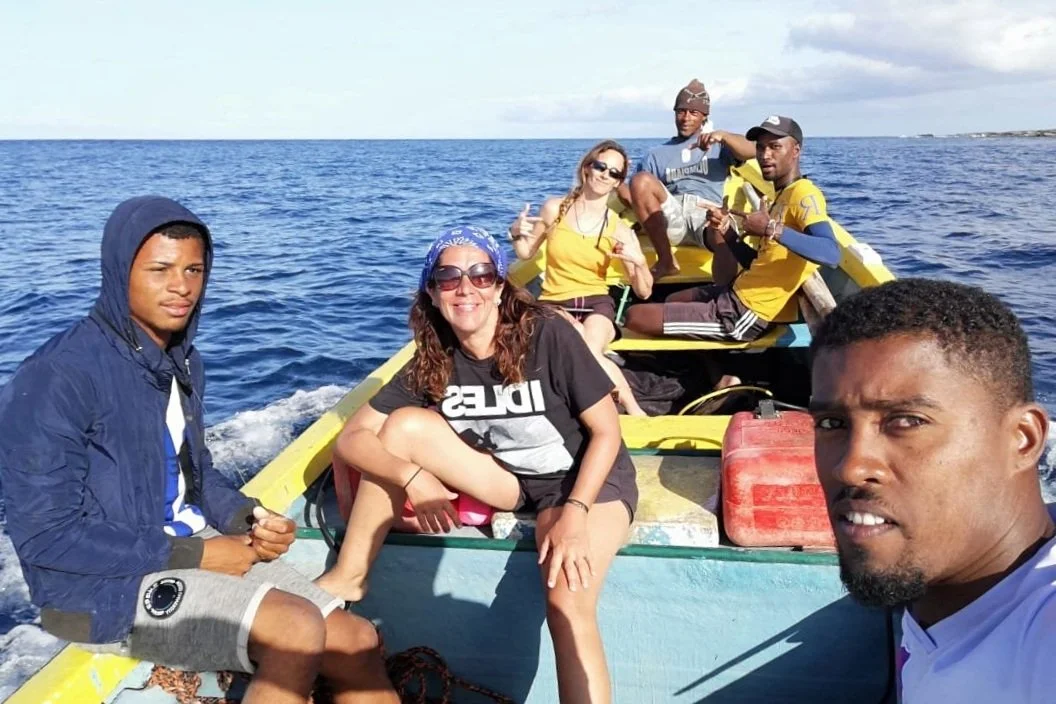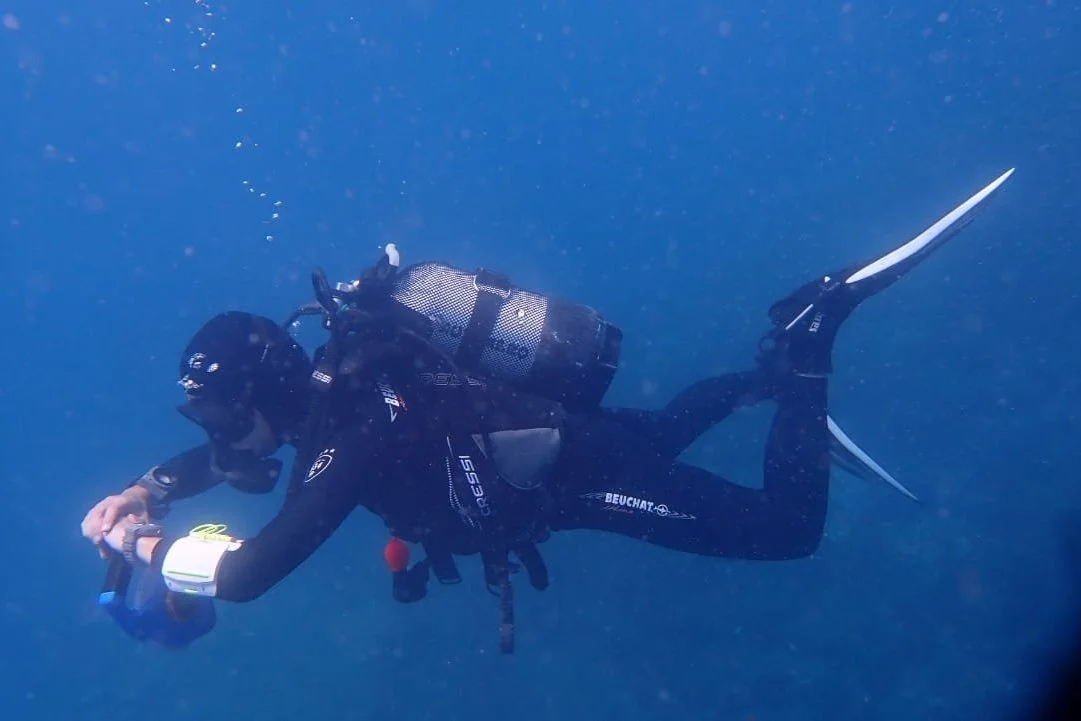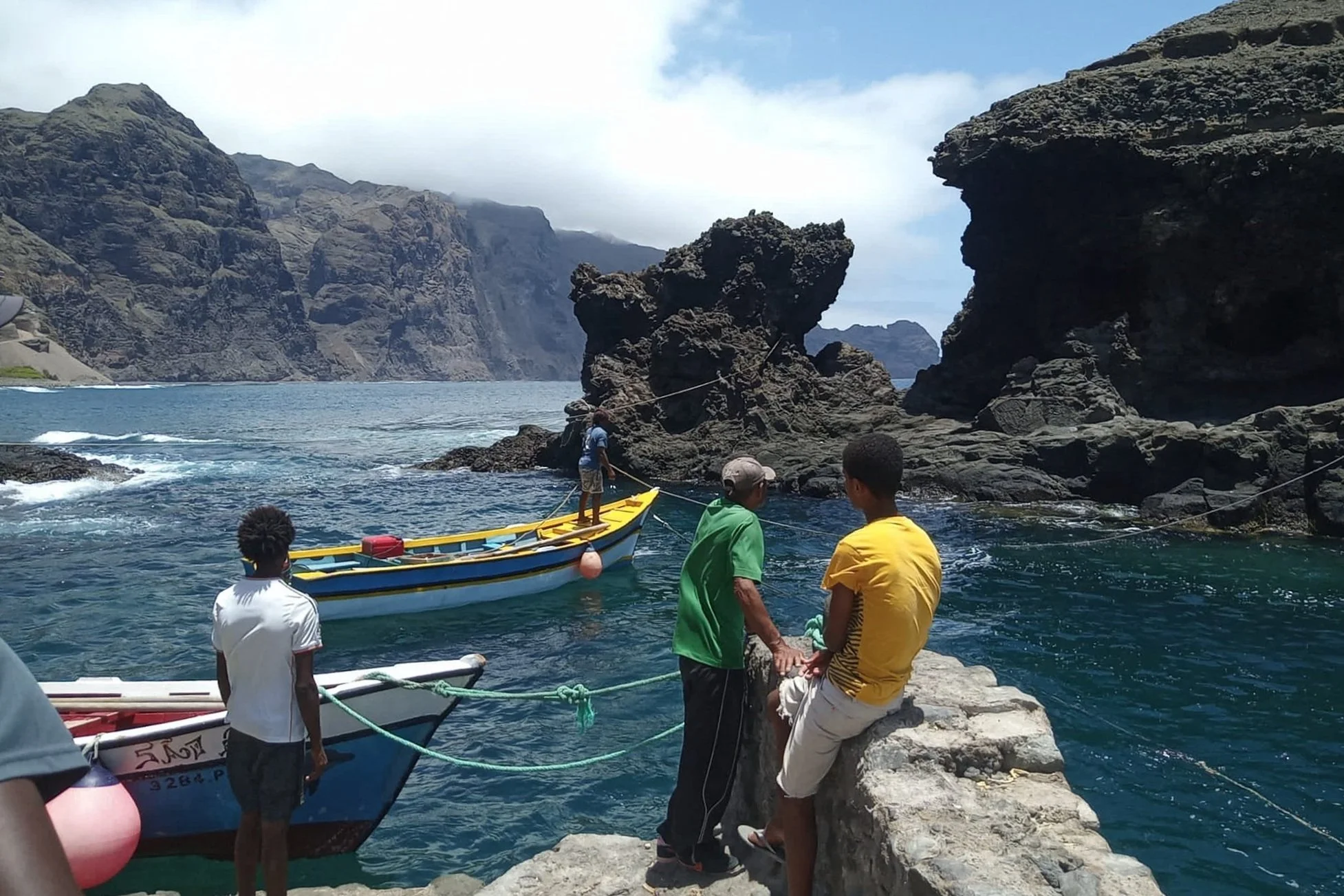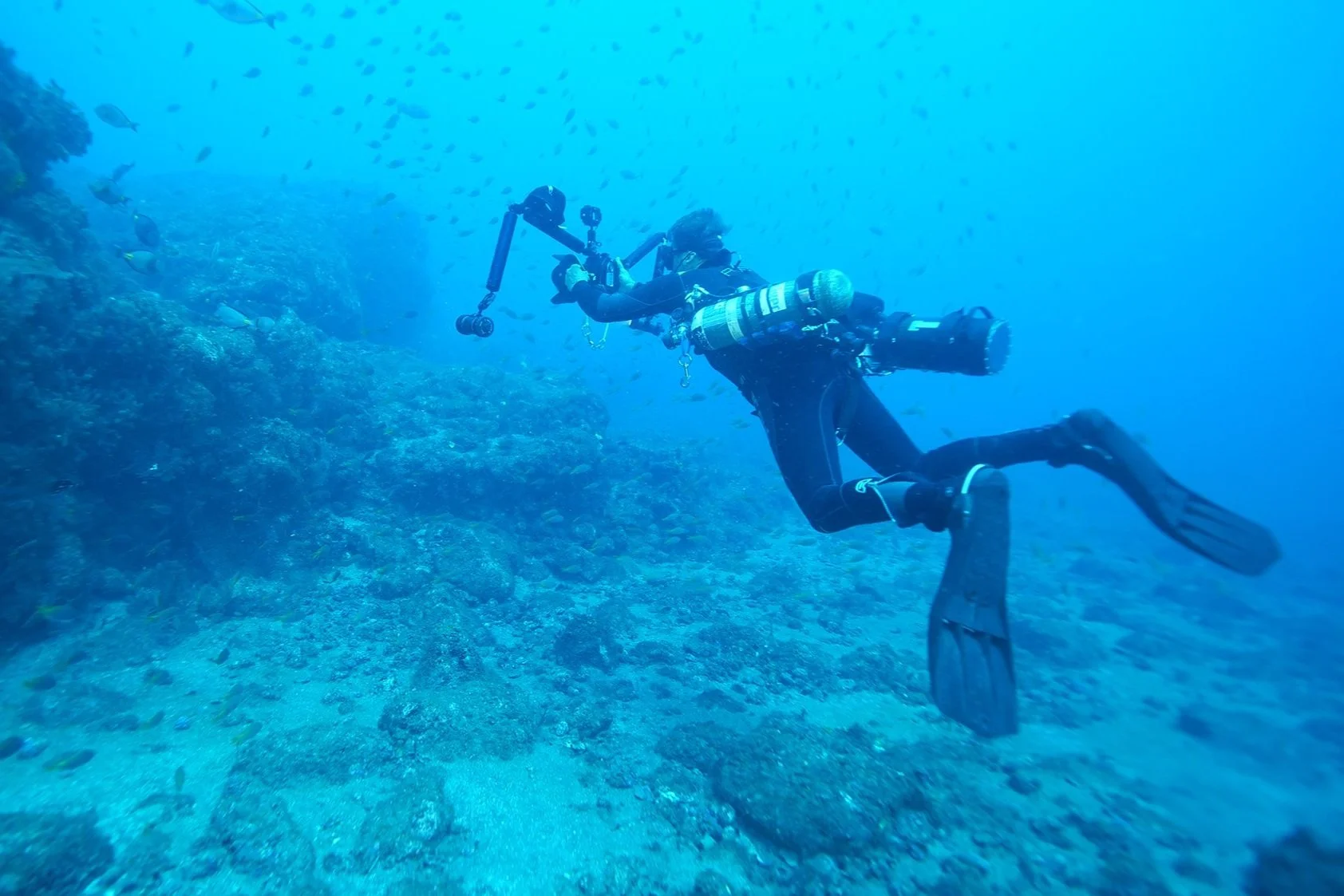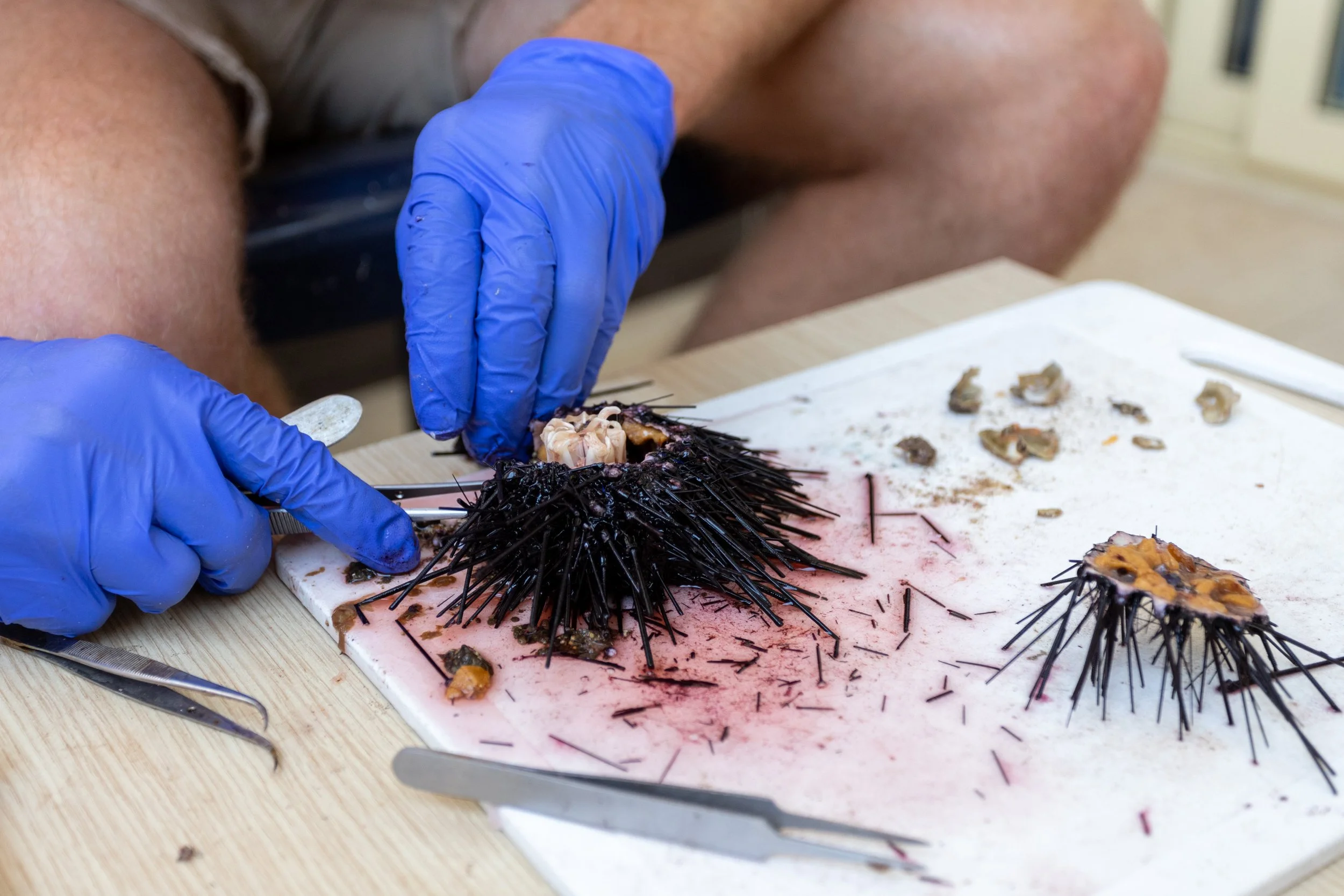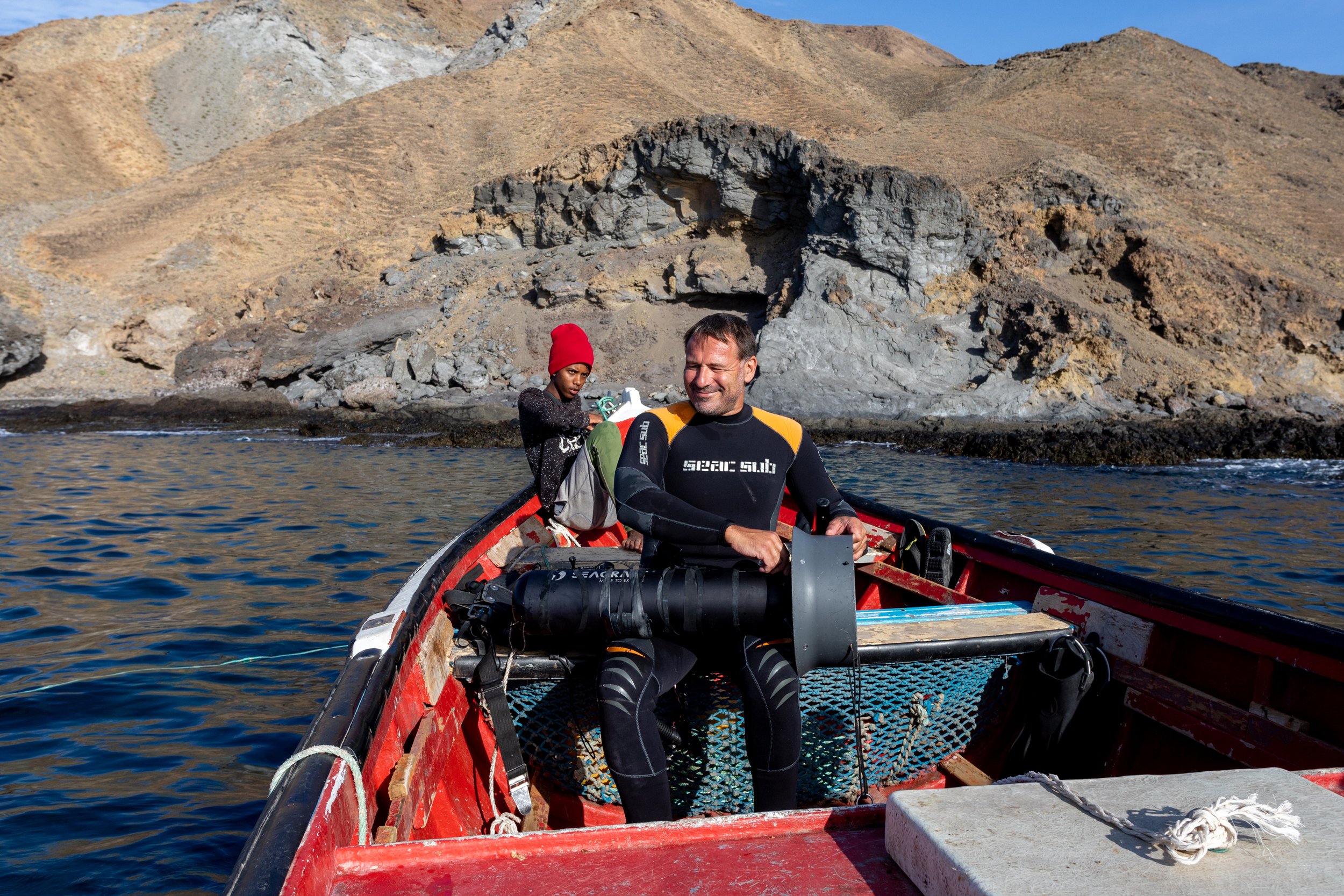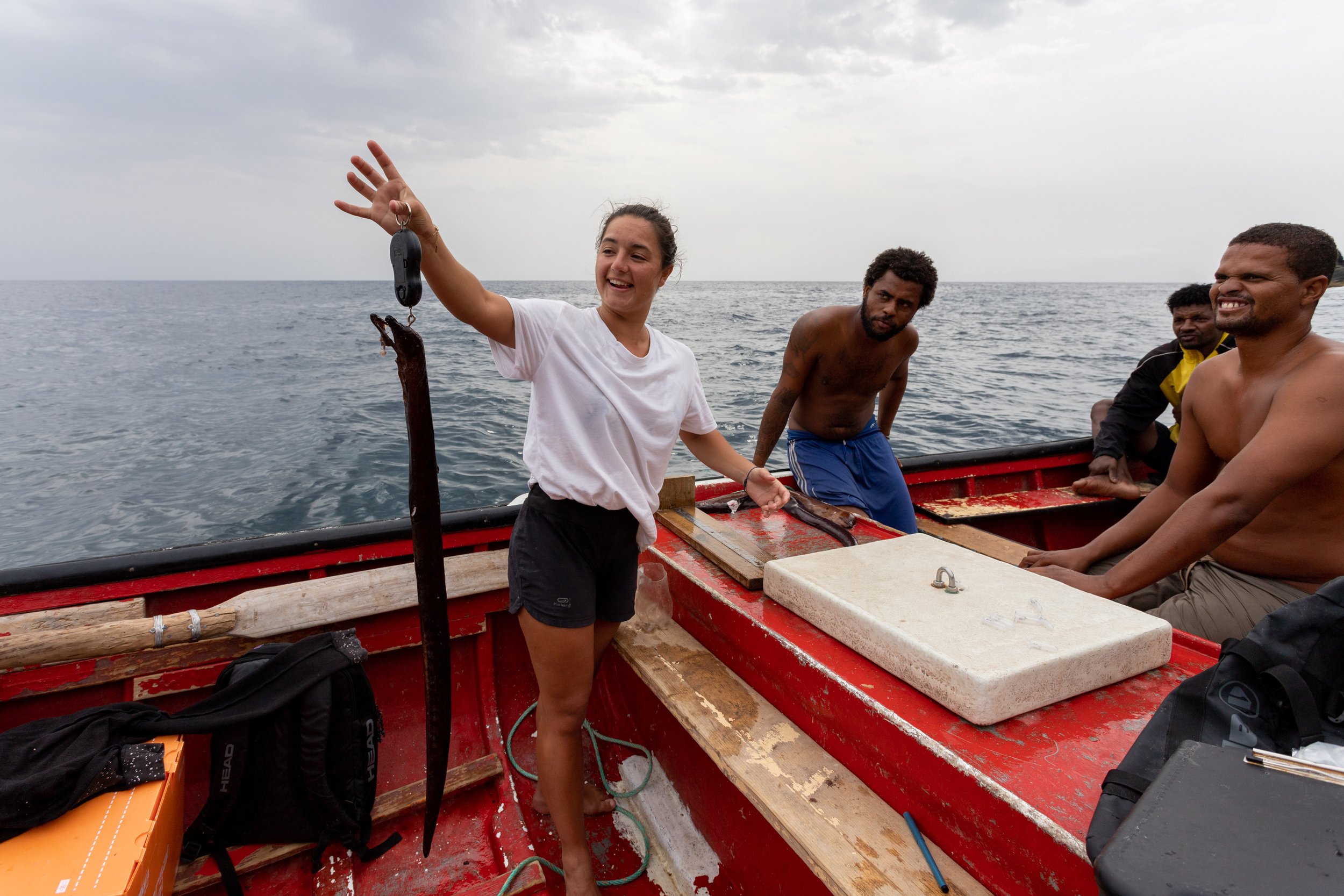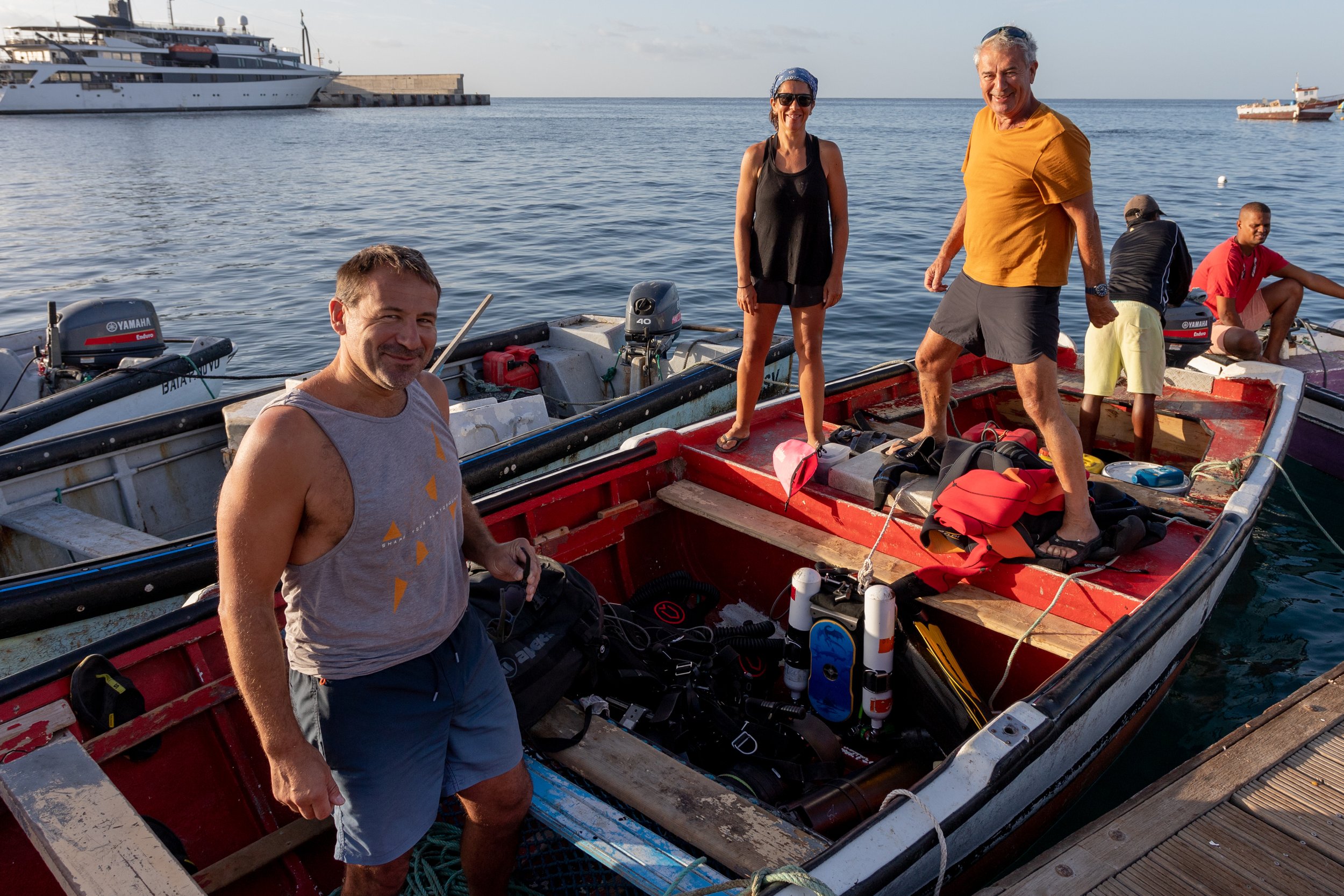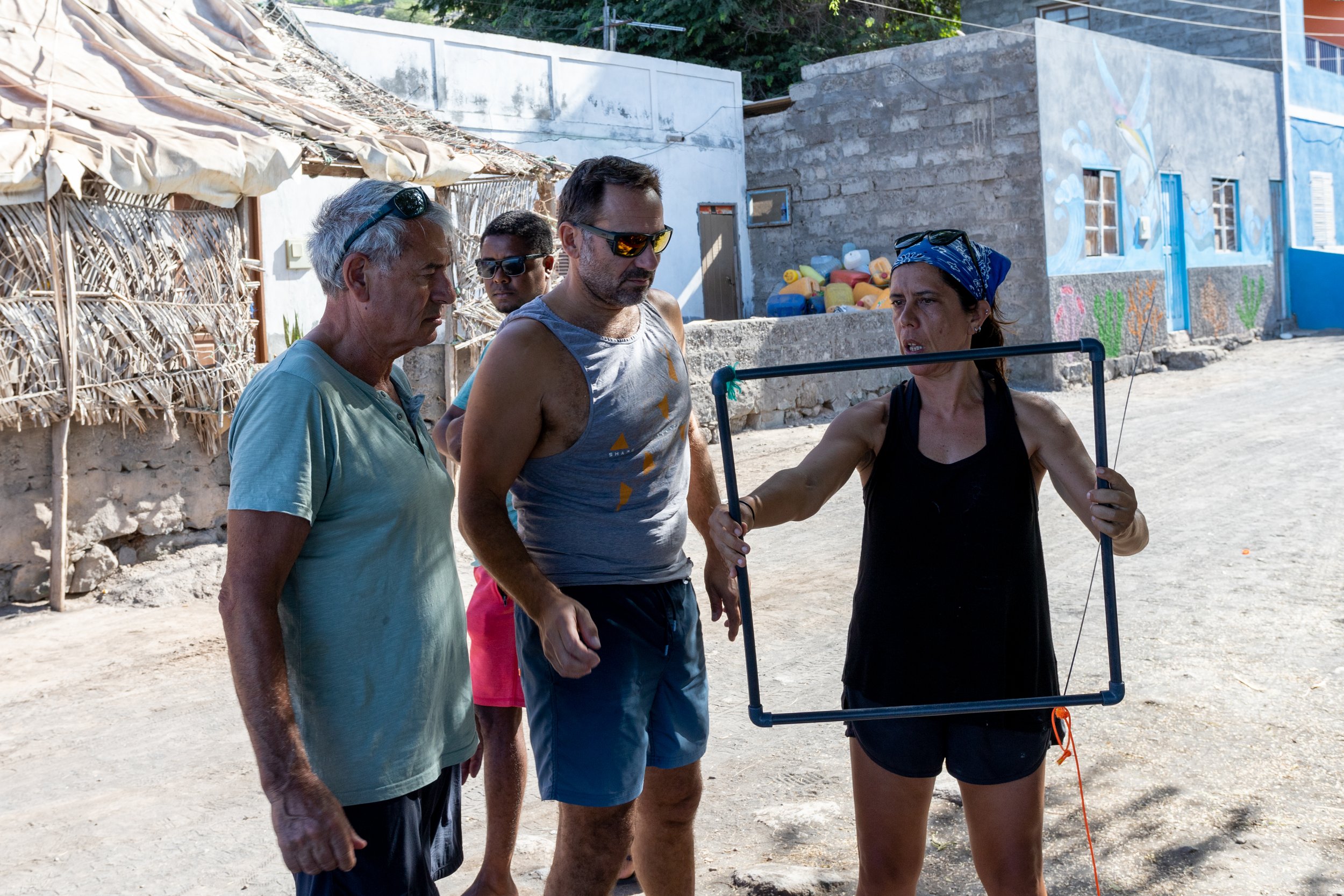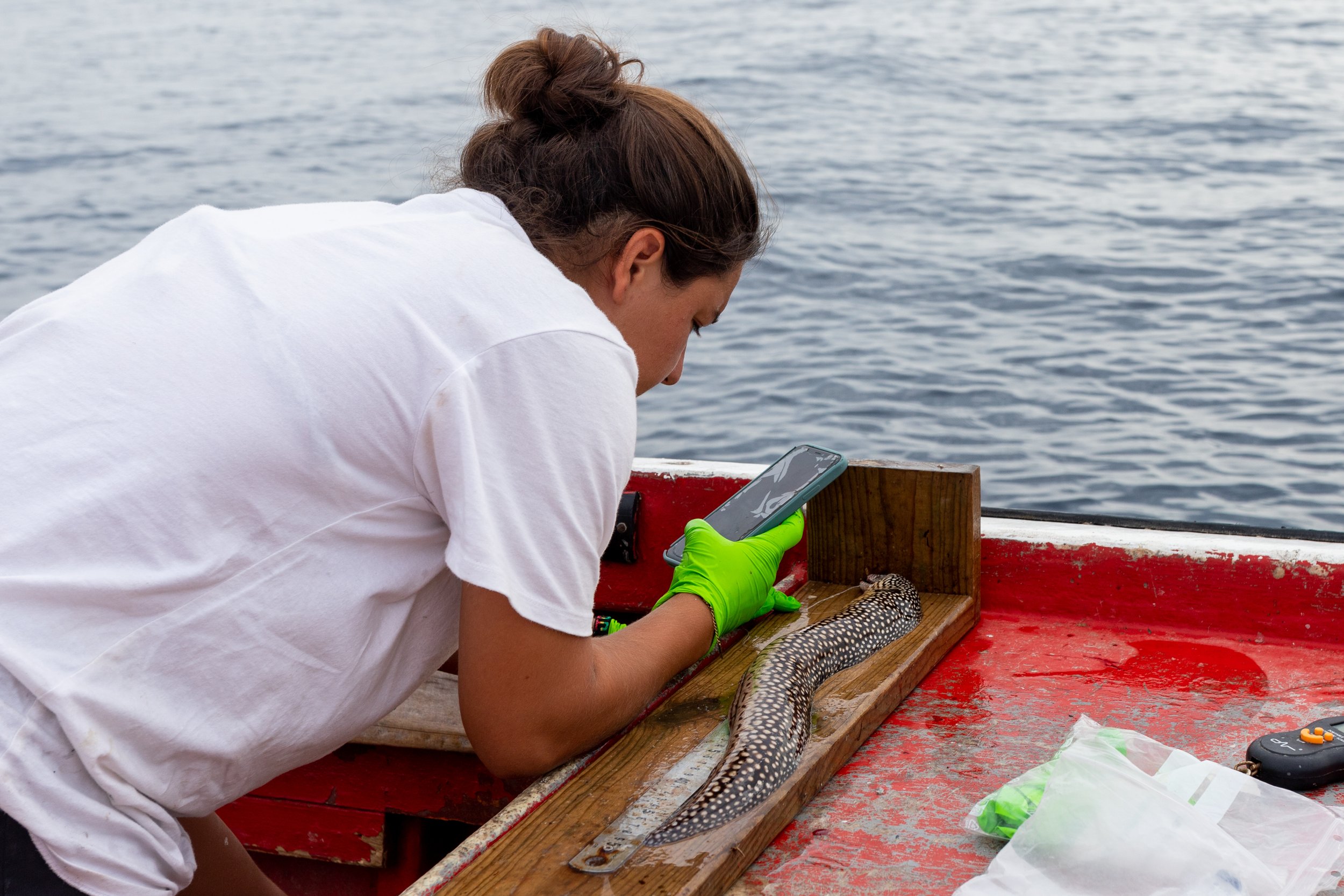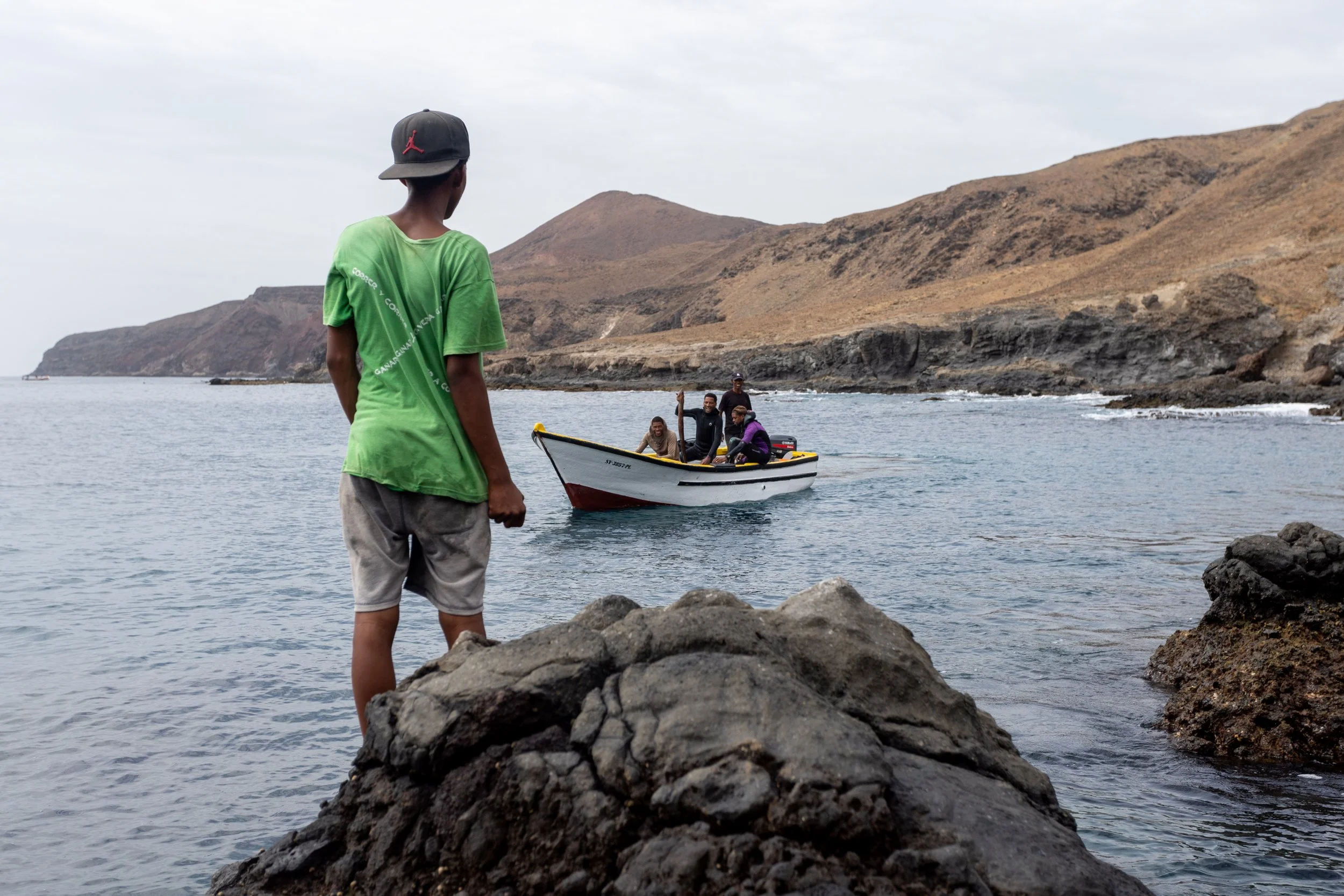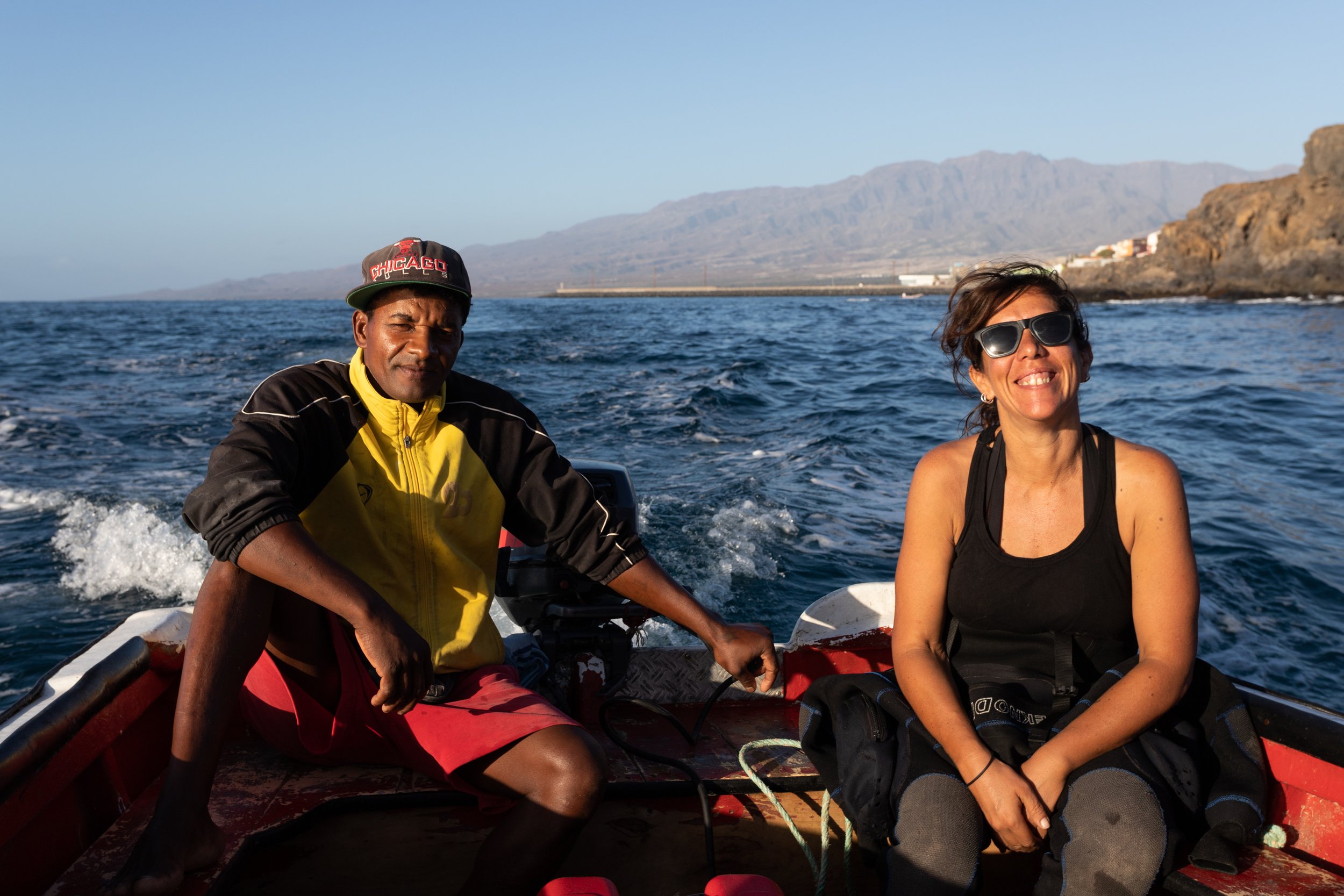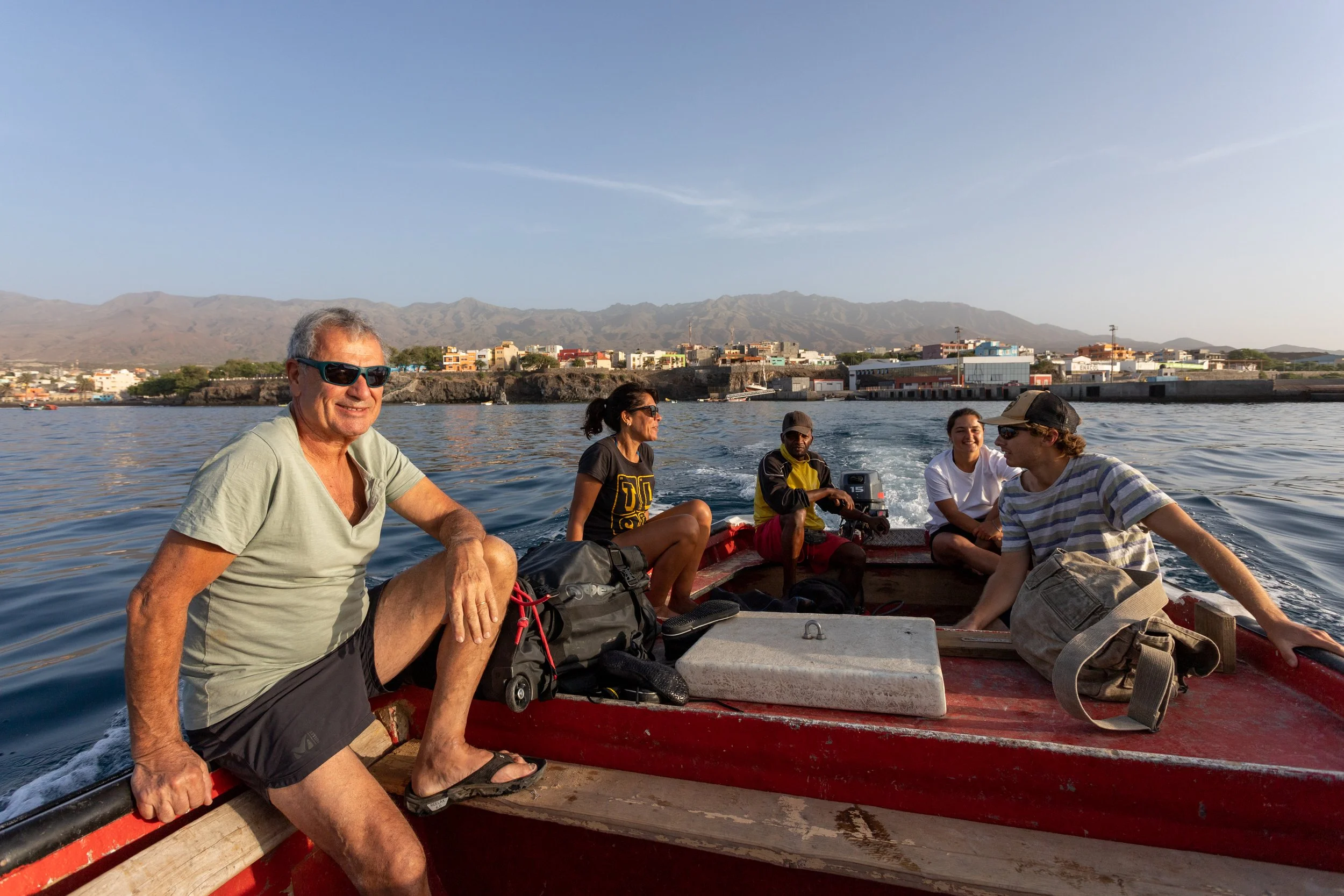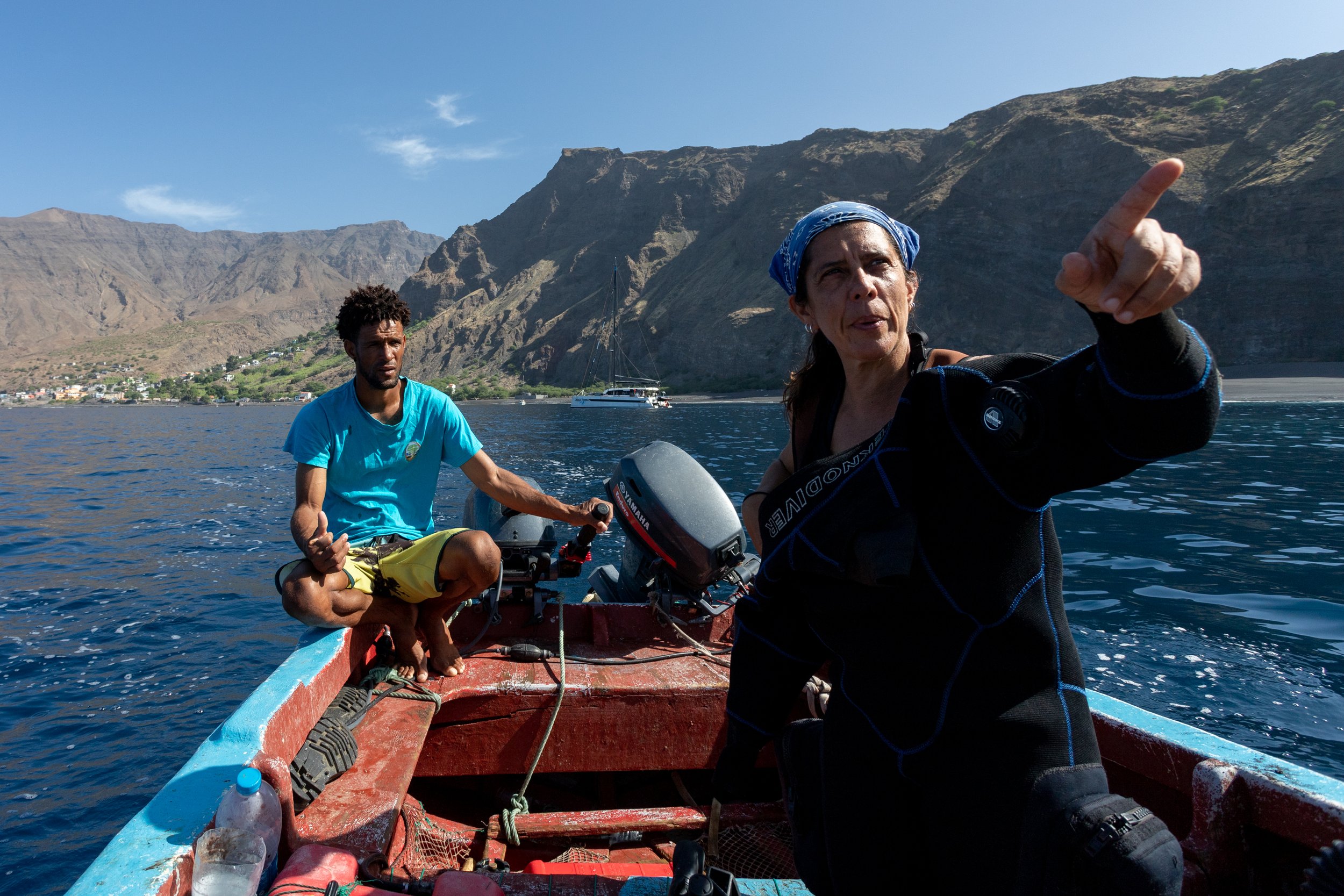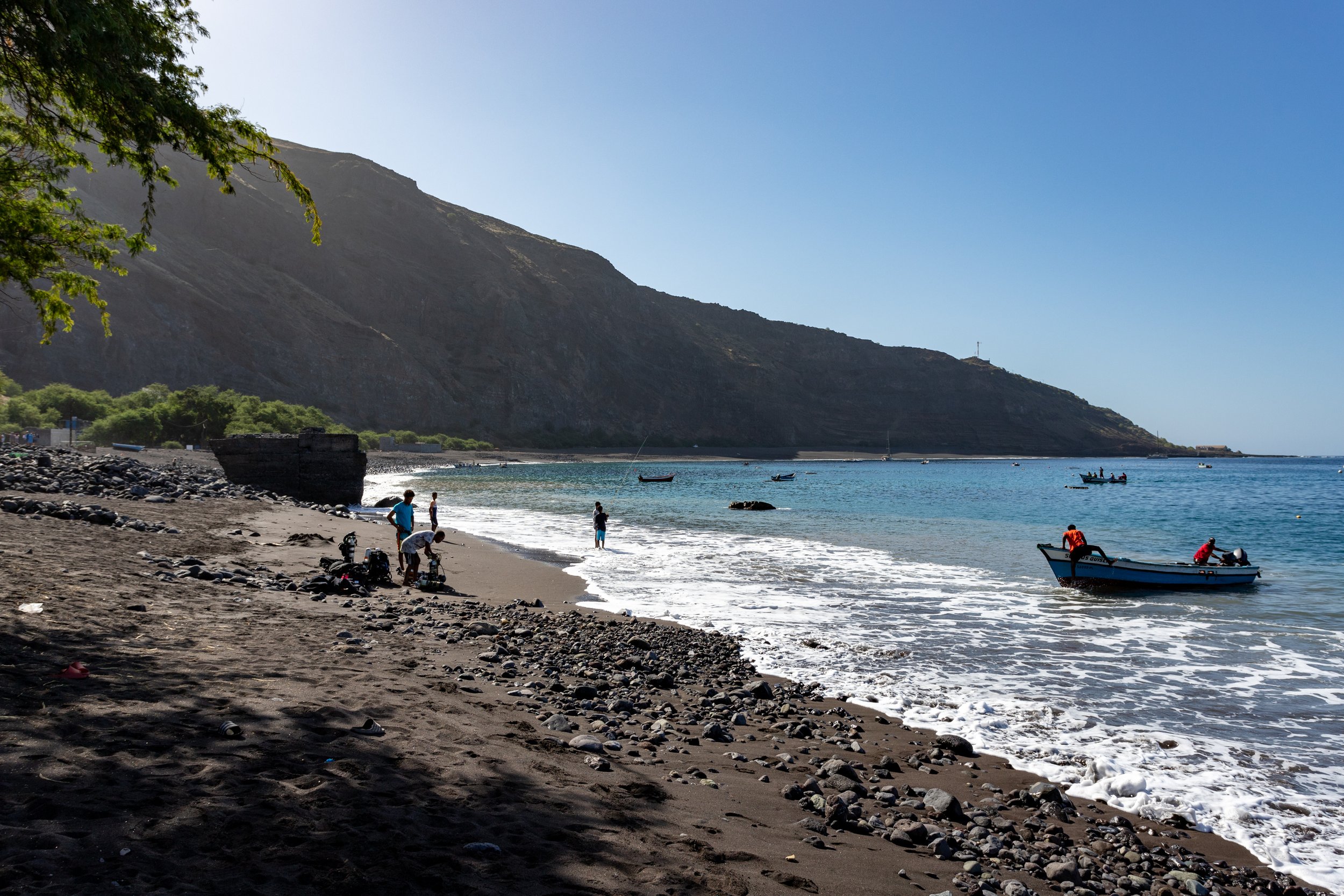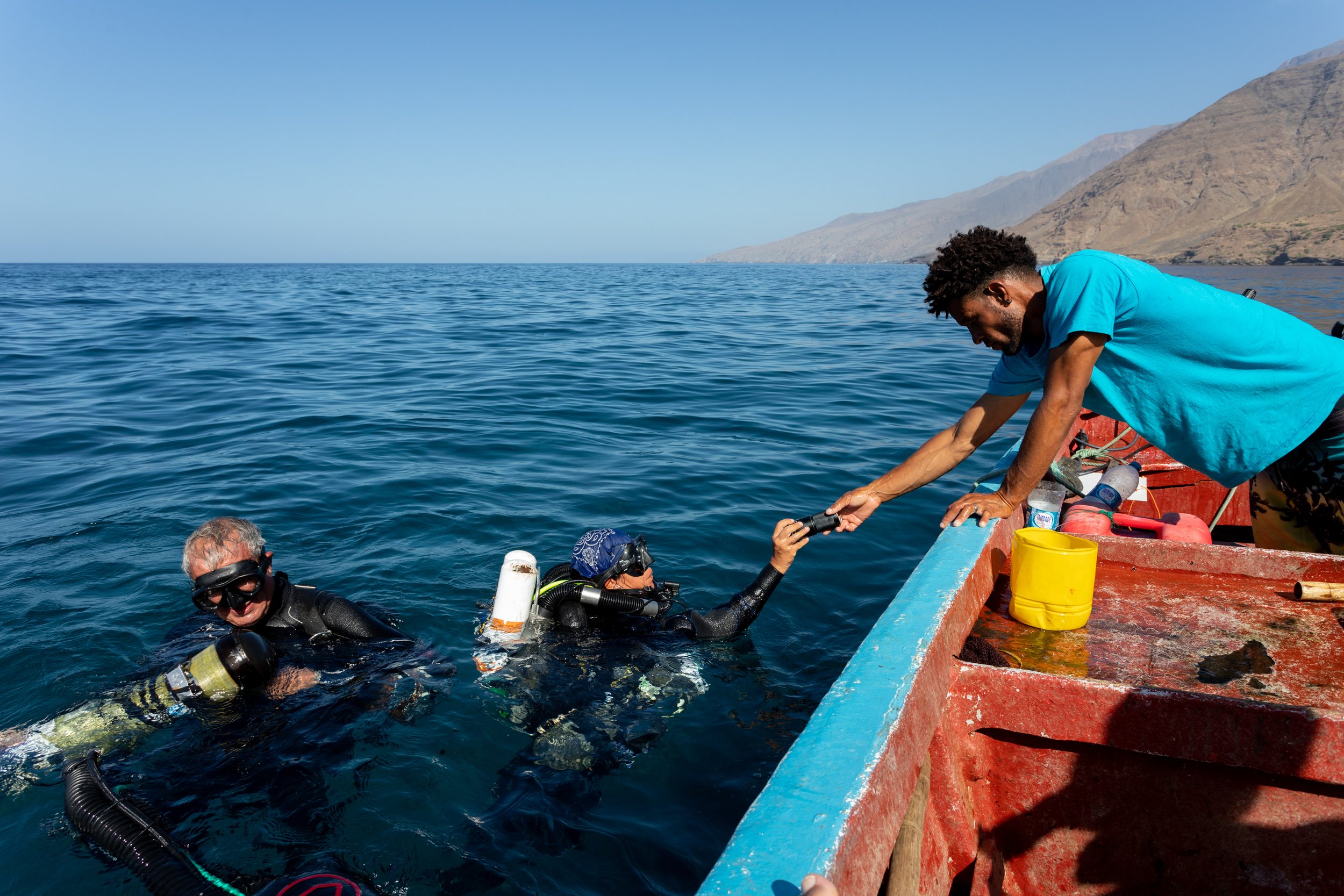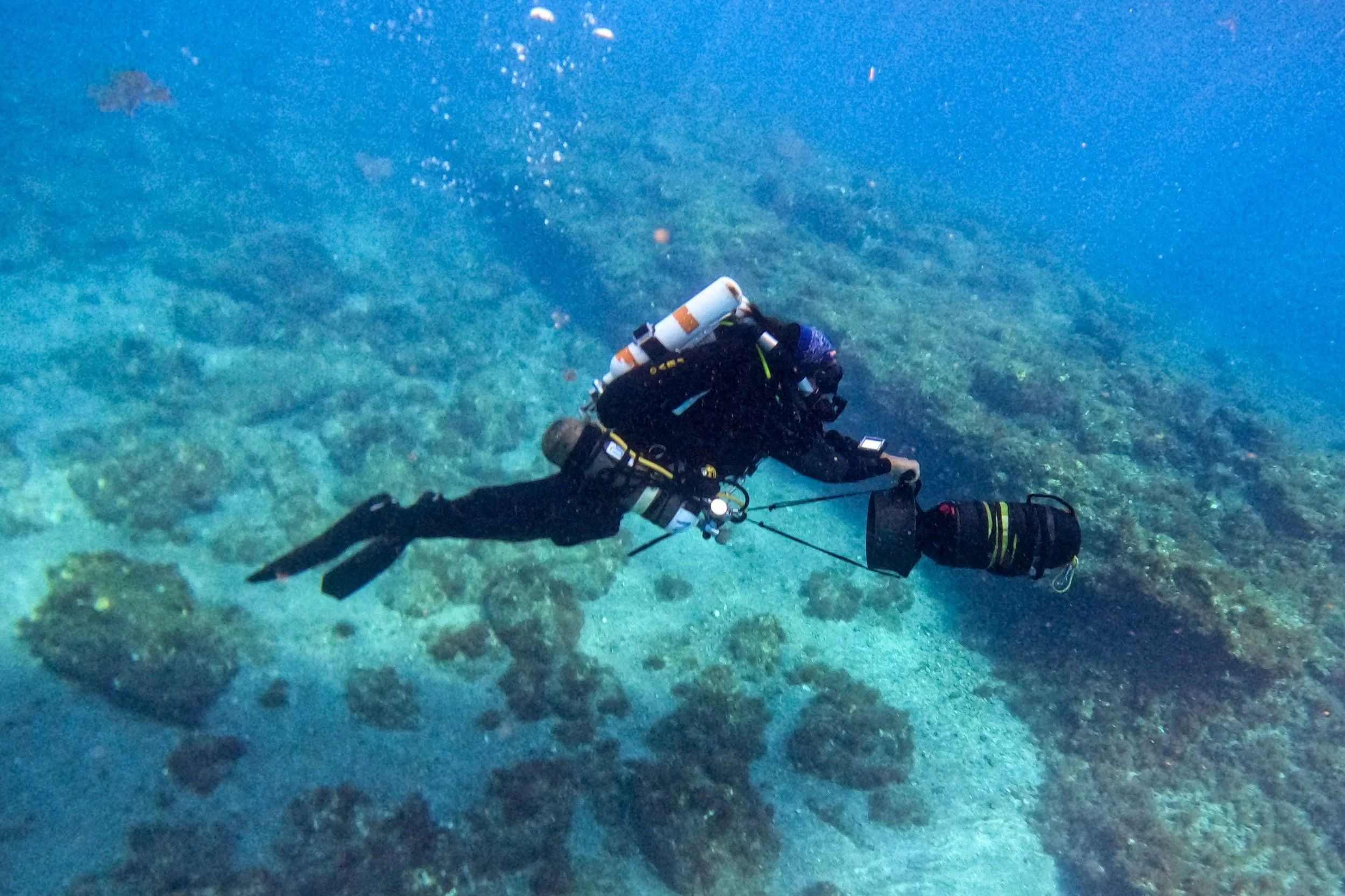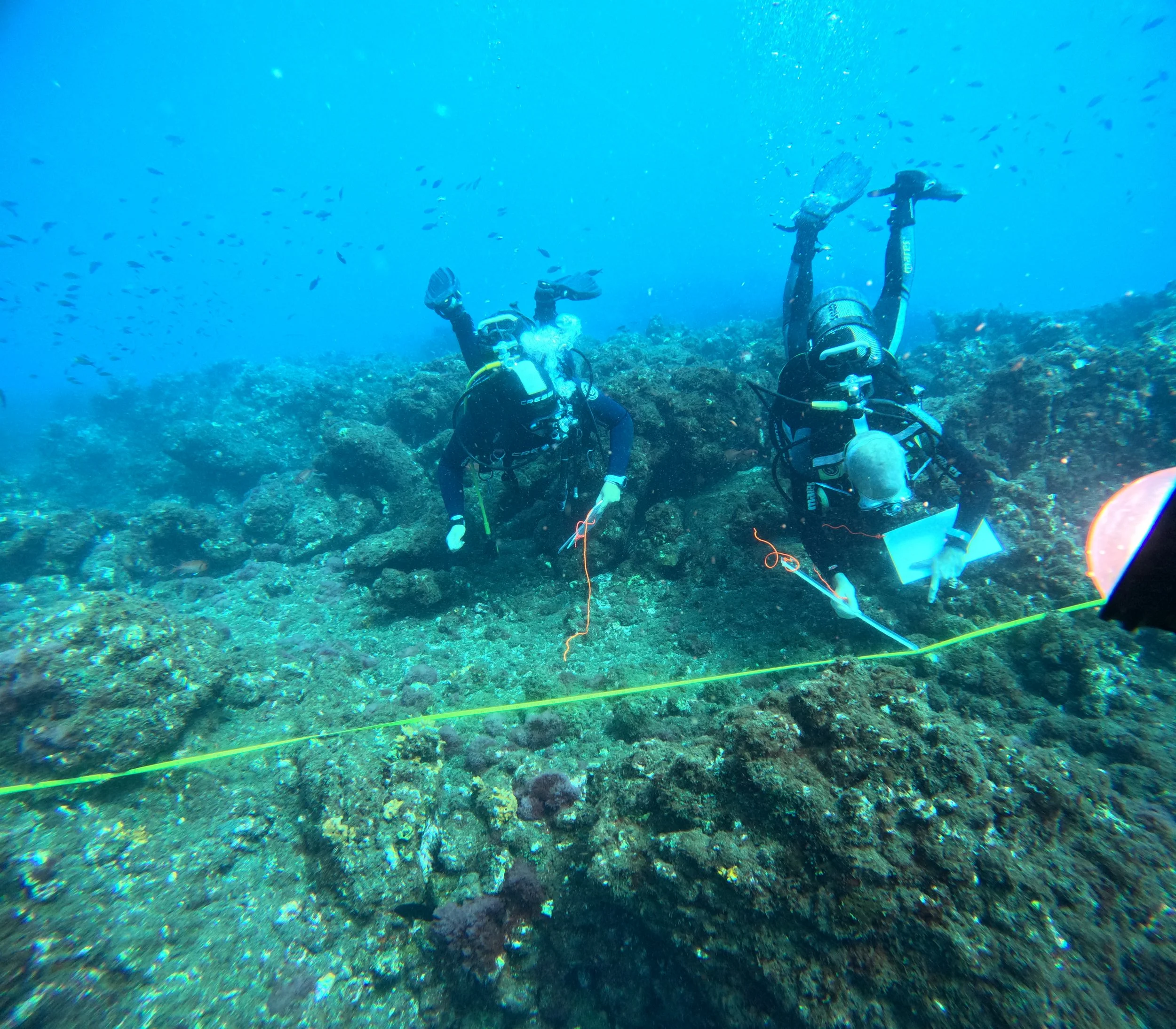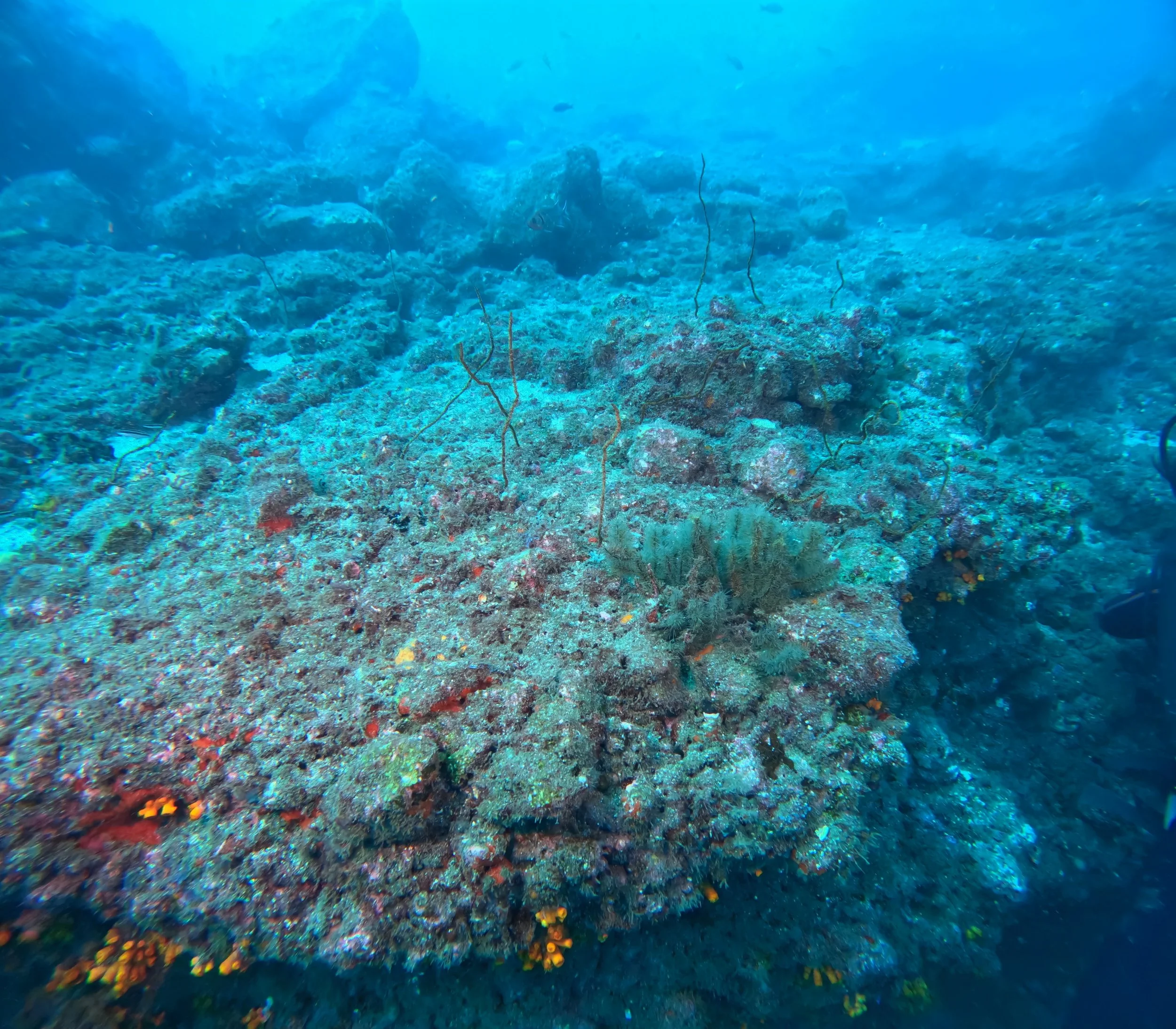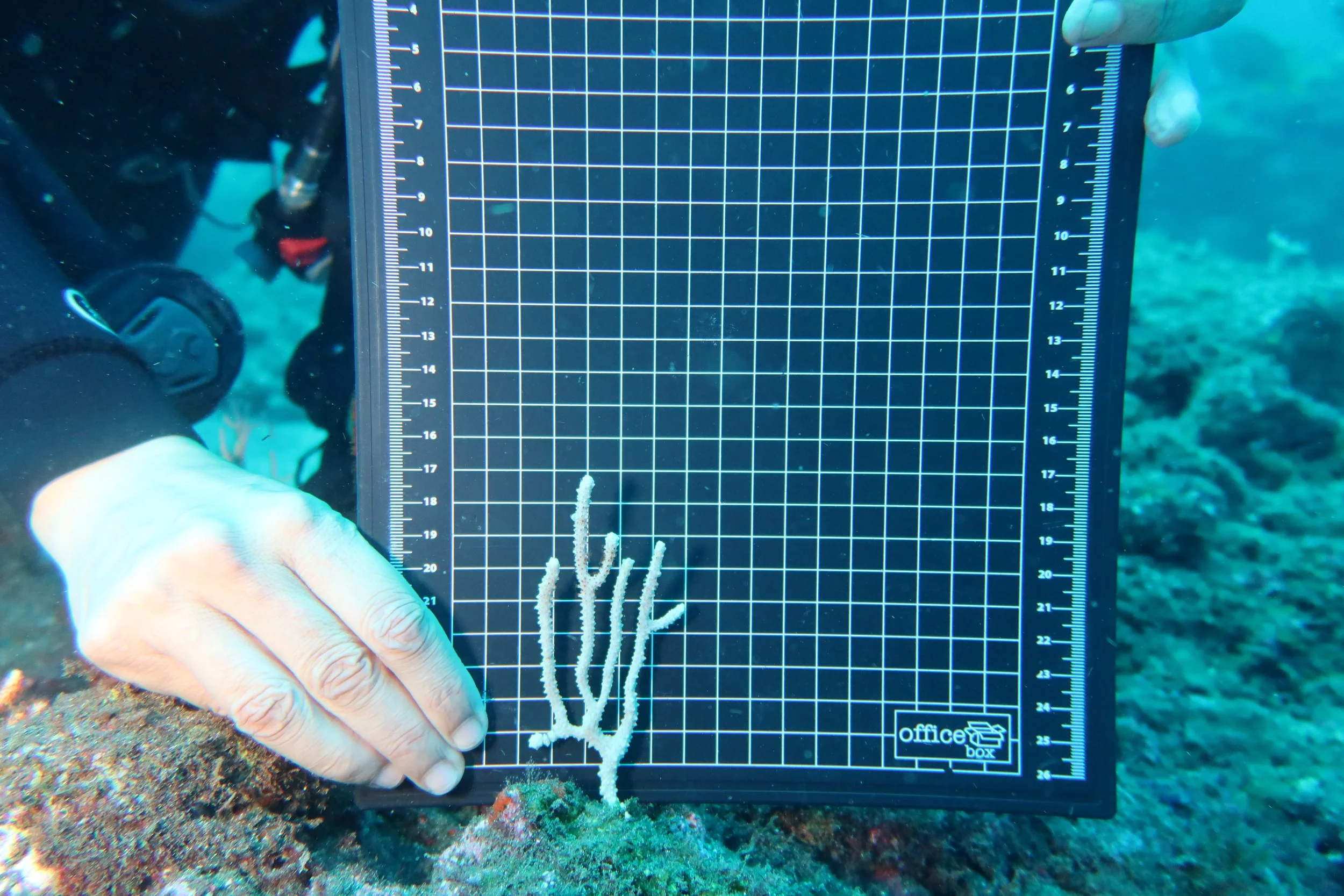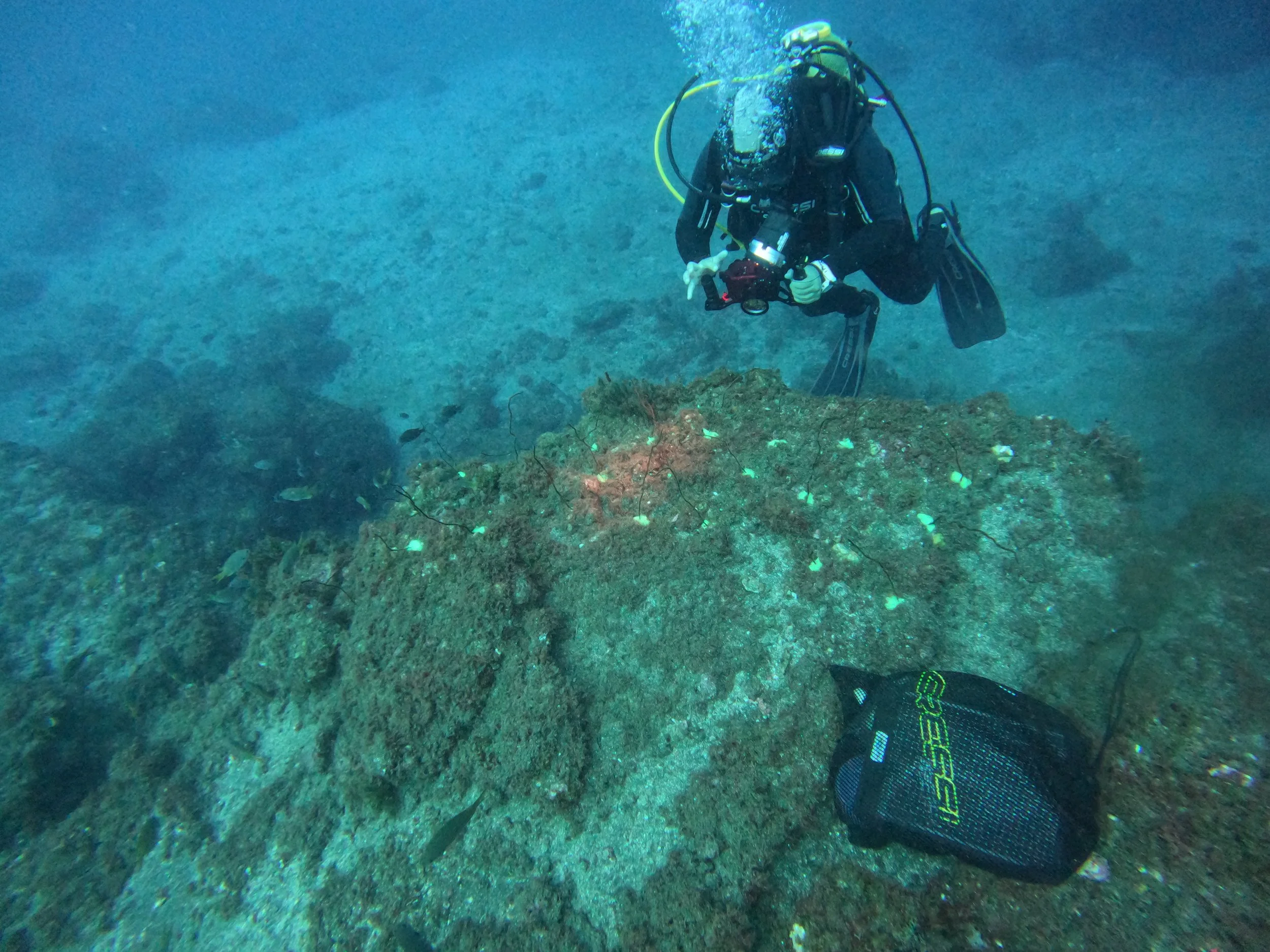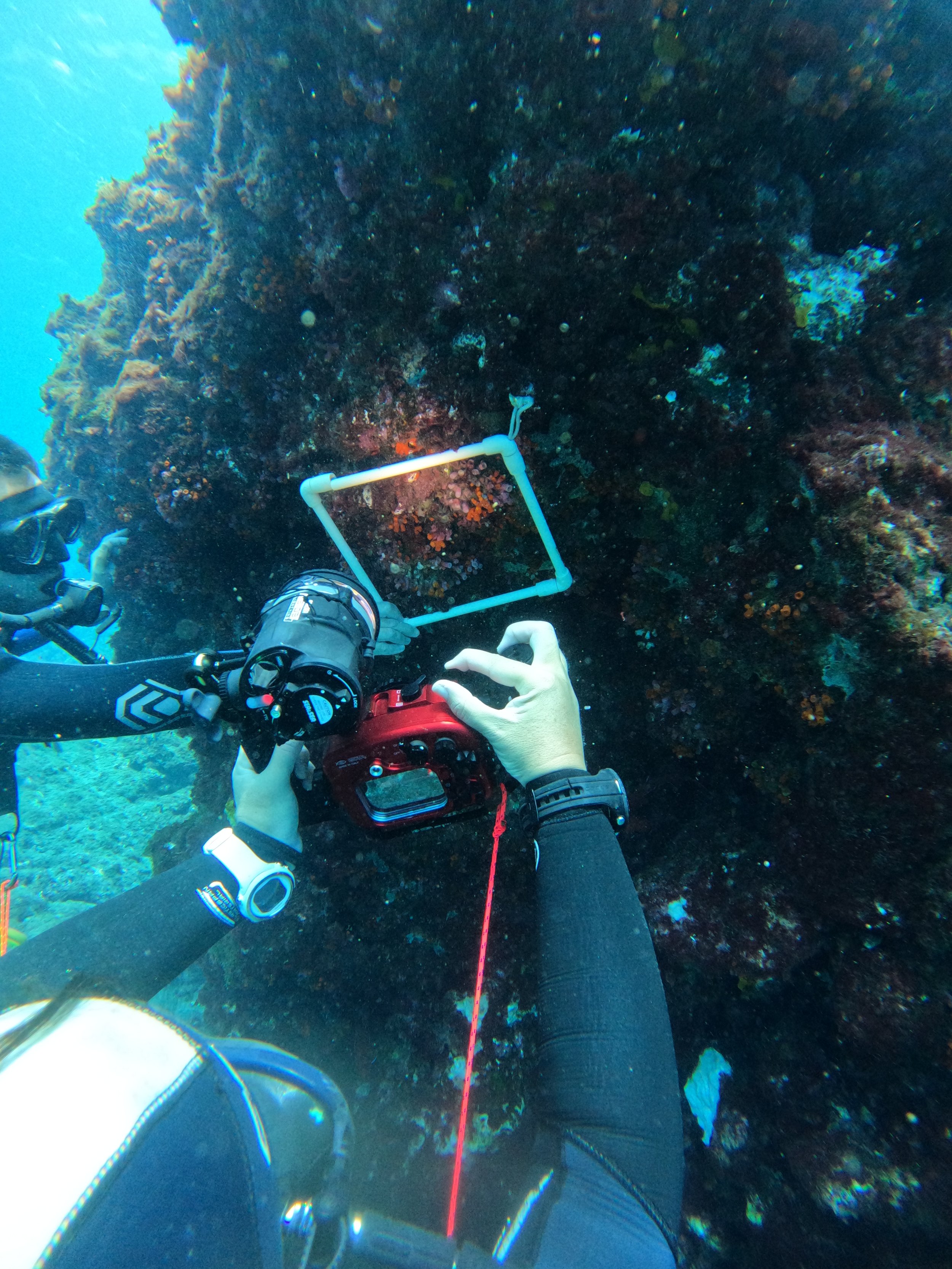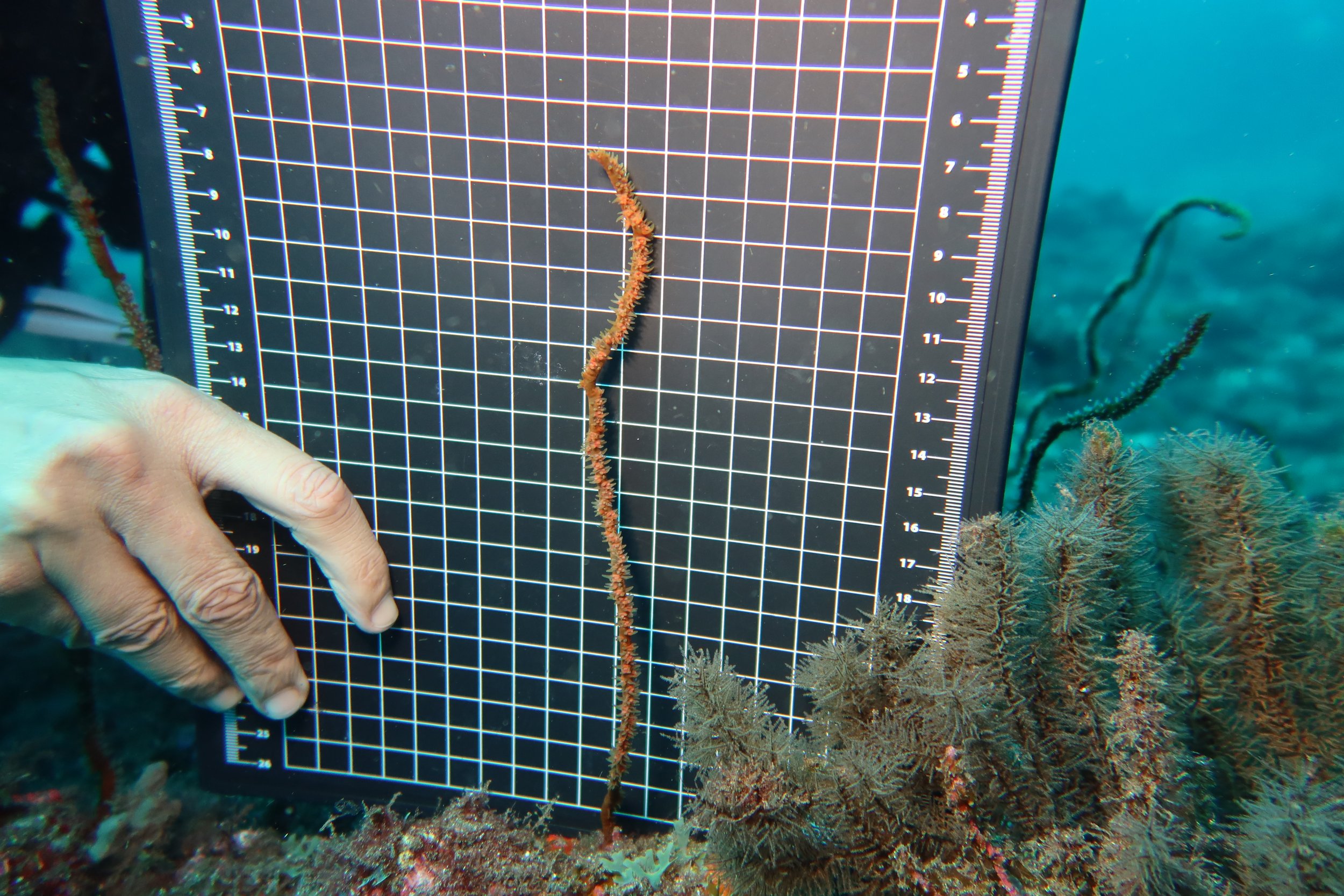
SAMPLING
1st field campaign to Santo Antão - June 2022
The project leader spent two weeks selecting possible locations for sampling and also meeting local fishermen for future collaboration.
At the same time, members from the CIIMAR team were working on the benthic seaweeds from the intertidal rocky shore of Santo Antão Coast. In this campaign, they monitored 7 locations around the island, from the North to the South.
Pictures : CIIMAR
Pictures : Teresa Amaro
2nd field campaign to Santo Antão - November/December 2022
The 2nd field campaign was focused mainly on collecting baseline data.
During the first two weeks of November Universidade de Aveiro/CESAM - Centro de Estudos do Ambiente e do Mar, CIIMAR in collaboration with BIOSFERA Cabo Verde, Universidade Técnica do Atlântico - UTA, Green Turtle Diving Center - Cabo Verde and the fishing community of Porto Novo, Janela and Tarrafal, focused on characterizing benthic communities up to 20 m depth and their relation to environmental characteristics in some of the target areas of Santo Antão.
Pictures : Alberto Queiruga
On the last week of November, the partners from GEOMAR, CSIC, Universidade de Aveiro/CESAM - Centro de Estudos do Ambiente e do Mar in collaboration with the University of Milano -Bicocca, OSCM and the Cabo Verde’s coastal guard started mapping the sea floor in Tarrafal and Monte trigo areas.
Finally the partners from GEOMAR and Universidade de Aveiro/CESAM - Centro de Estudos do Ambiente e do Mar in collaboration with a local fisherman from Porto Novo deployed time lapse cameras in different locations and depths.
3rd field campaign to Santo Antão - April/May 2023
Characterising the benthic communities in Tarrafal and Monte Trigo.
During April and May GEOMAR, CSIC, Universidade de Aveiro/CESAM - Centro de Estudos do Ambiente e do Mar and the local fishing community from Porto Novo and Tarrafal focused on characterising the benthic communities in areas deepr than 20 m, in Tarrafal and Monte Trigo.
UAc and Universidade de Aveiro/CESAM - Centro de Estudos do Ambiente e do Mar also characterised the oceanographic parameters in the water column, validating the satellite data already collected around Santo Antão island.
4th field campaign to Santo Antão - June/July 2023
Characterization of the benthic communities in the North and Southwest of Santo Antão. The different habitats deeper than 20m all around the island started to be accomplished.
During June 2023, Universidade de Aveiro/CESAM - Centro de Estudos do Ambiente e do Mar in collaboration with BIOSFERA Cabo Verde, Project Biodiversity and the local fishing community of Cruzinha,focused on characterizing benthic communities and their relation to environmental characteristics in the North and SoutWest area of Santo Antão.
During July, Underwater Experience and Universidade de Aveiro/CESAM - Centro de Estudos do Ambiente e do Mar in collaboration with the local fishing community of Porto Novo, Cruzinha and Tarrafal, focused on characterising the different habitats around Santo Antão deeper in areas than 20 m.
Black coral forests and fields of gorgonians were found. Have a look at the pictures and videos below :
5th field campaign to Santo Antão - October/December 2023
From October to December 2023, COAST Cabo Verde continued to work on different locations in Santo Antão Island, with the WP1, WP2 and WP3 partners. Once again, this work would not be possible to be achieved without the local fishermen.
The WP3 team (Facultat de Biologia UB, IRBio, CIIMAR / CIMAR Associate Laboratory, Universidade de Aveiro/CESAM - Centro de Estudos do Ambiente e do Mar) did their first campaign to Santo Antão and worked on the first assessment on coral biodiversity and start implementing pilot restoration protocols in some locations of the island. While doing this, they have also evaluated that bleaching of Milllepora is occuring along with mortality of Tubastrea at several depths.
During the first three weeks of November 2023, the WP2 team did their first campaign. UBO - Université de Bretagne Occidentale, Universidade de Aveiro/CESAM - Centro de Estudos do Ambiente e do Mar and Underwater Experience started to investigate the ecosystem functioning of Santo Antão’s coastal habitats.
During the last week of November and the first of December - as part the WP1 and WP2 -, Frederic Swierczynski, Bruno Gaidan (Underwater Experience) and Teresa Amaro (Universidade de Aveiro/CESAM - Centro de Estudos do Ambiente e do Mar) continued to characterize benthic and pelagic biodiversity in target areas and in depths beyond 30 m.
6th field campaign to Santo Antão - May/July 2024
From May to July 2024, COAST Cabo Verde continued to work on different locations in Santo Antão Island.
During the month of May, the COAST Cabo Verde project dedicated 2 weeks studying black coral forests in Santo Antäo, with Frederic Swierczynski, Bruno Gaidan (@underwaterexperience) and Teresa Amaro from (CESAM - Centro de Estudos do Ambiente e do Mar, Departamento de Biologia - Universidade de Aveiro).
In June, the WP2 spent 2 weeks on the NW side of the Santo Antão island. At this campaign, UBO - Université de Bretagne Occidentale and CESAM - Centro de Estudos do Ambiente e do Mar in collaboration with New Blue Ecoturismo e Conservação investigated how the ecosystem functions at this side of the island. We have collaborated with the local community to have our work accomplished.
During the same periodo, Professor Ana Martins, Cassandra Pacheco and Sérgio Gomes from Okeanos - Instituto de Investigação em Ciências do Mar were in the same location carrying out oceanographic measurements of biotic and abiotic parameters in the water column, using a multiparametric probe and a Secchi Disk, and using traditional fishing boats. At the same time, within the scope of Task 1.4, led by the Oceanography team at the University of the Azores, satellite images are also being processed daily, with the aim of studying the region by measuring other oceanographic parameters.
7th field campaign to Santo Antão - October/November 2024
In October UBarcelona and UAveiro were back in the water for more work on corals.
The WP3 of the COAST Cabo Verde project monitored the restoration protocol, evaluated the bleaching of Millipora that occurred last year, along with the mortality of Tubastrea and finished the coral assessment in the island. We would like to thank Djadja for his patience with us and the amazing local knowledge shared with us. Facultat de Biologia UB, CIIMAR / CIMAR Associate Laboratory, Universidade de Aveiro, CESAM - Centro de Estudos do Ambiente e do Mar, BiodivERsA.
As part of the WP1 of the COAST Cabo Verde project, Okeanos - Instituto de Investigação em Ciências do Mar, #UAC, Universidade de AveiroCESAM - Centro de Estudos do Ambiente e do Mar, abiotic and biotic parameters in the water column were samples in the north and in the eastern part of Santo Antao island. We used a multiparameter probe and a secchi disk. Thank you so much once again to Djadja who helped us tremendously to achieve our objectives.
8ª campanha em Santo Antão - Outubro 2025
In October, UBarcelona e UAveiro went back to the water to finish their work in coral restoration.
WP3 of the COAST Cabo Verde project monitored and finalised the restoration protocol and assessed the bleaching of Millipora that occurred 2 years ago, together with the mortality of Tubastraea. Once again, we would like to thank Djadja for his patience with us and for the incredible local knowledge he shared with us.. Facultat de Biologia UB, Universidade de Aveiro, CESAM - Centro de Estudos do Ambiente e do Mar.

